A reminder that the covers of Batman comics can be awesome… and fun!
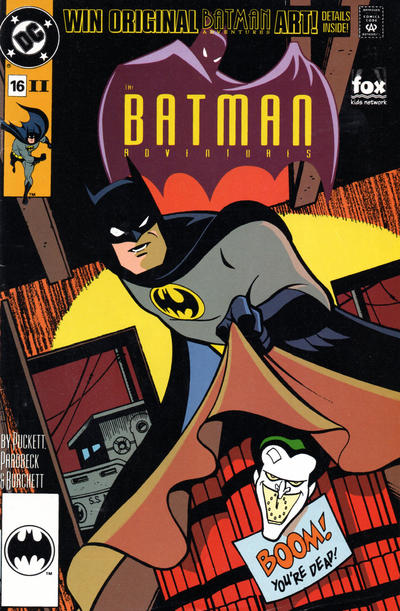
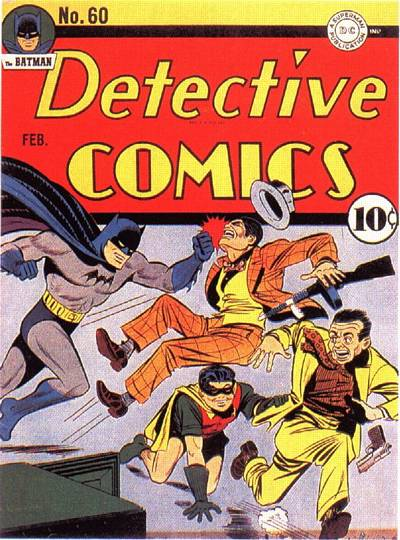
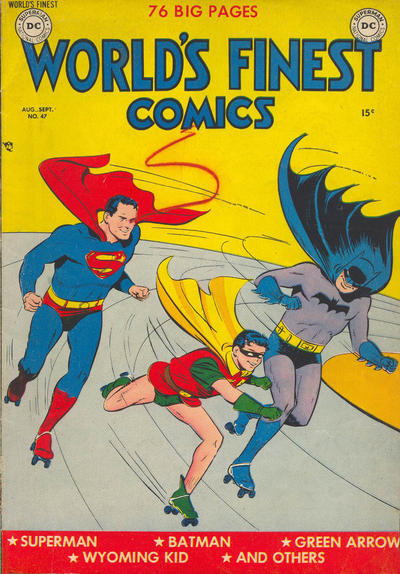
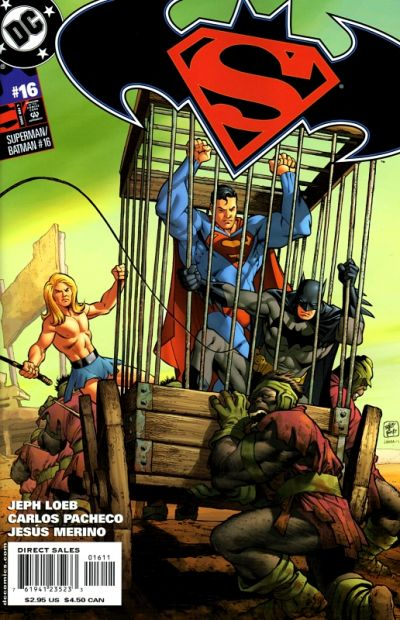
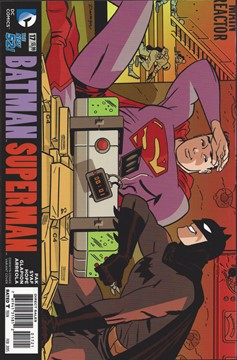
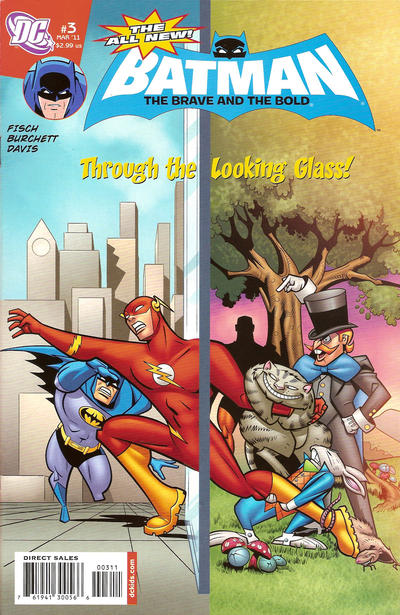
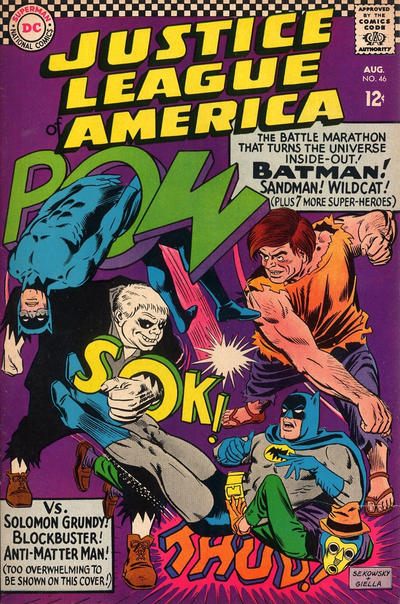
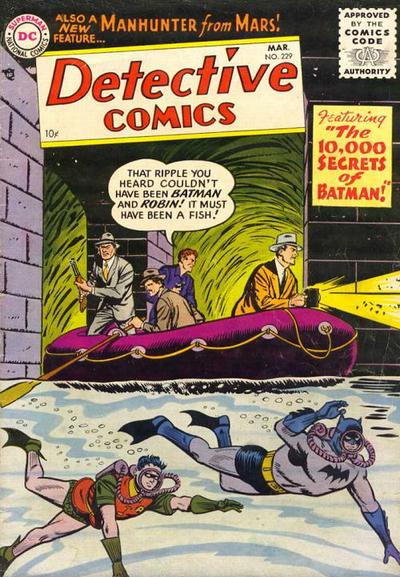
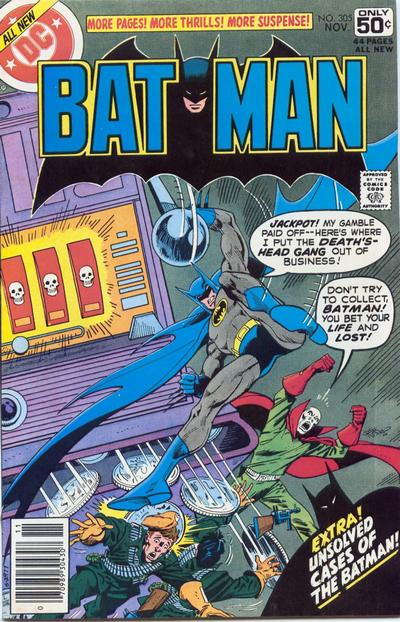
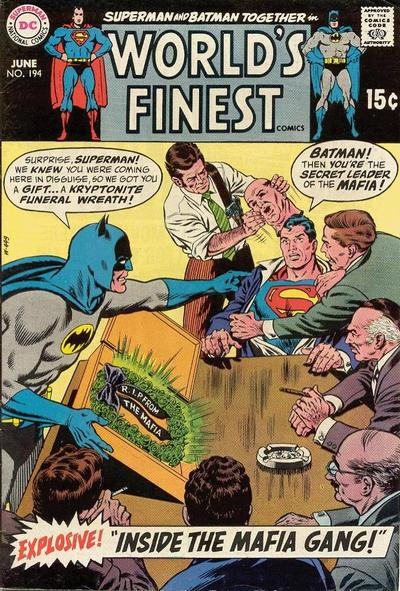
A reminder that the covers of Batman comics can be awesome… and fun!










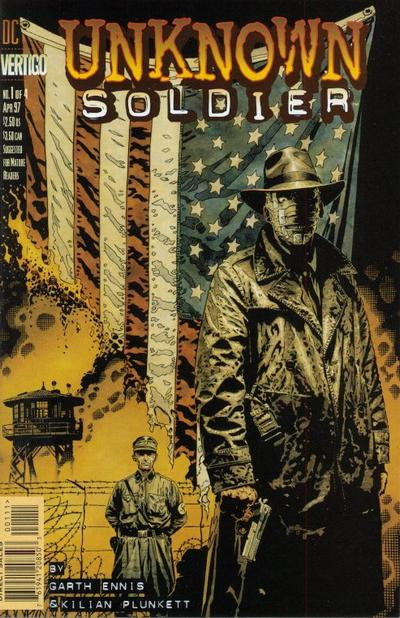
After being absent from the stands for about eight years, in 1997 the spy/war comic Unknown Soldier got the Vertigo treatment. By then, the Vertigo imprint had come to specialize in getting edgy (usually British) creators to reimagine third-tier DC properties through a much darker, mature, and modern sensibility. While editors Karen Berger and Shelley Bond had initially forged the imprint’s identity around literate horror, however, Axel Alonso seemed eager to open a parallel line devoted to violent crime and intrigue (he soon went on to edit Human Target and 100 Bullets) and this politically charged four-issue mini-series was just the sort of project that fit like a glove.
Asking Garth Ennis to update an old war comic may seem like a no-brainer today but, to Alonso’s credit, this was years before Ennis proved himself a master of the war genre and back when he was mostly known for writing humorous fantasy (most notably Preacher, edited by Alonso). Likewise, while Tim Bradstreet’s portentous, photorealistic compositions (see above) now look like classic Vertigo covers, as far as I can tell they were some of Bradstreet’s earliest cover work, so they forcefully conveyed the notion that this was not your daddy’s Unknown Soldier… The comic looked ‘serious’ and ‘relevant’ – check out that burning flag!
Plus, because it was Vertigo, you knew you’d get your share of gore and swearing…
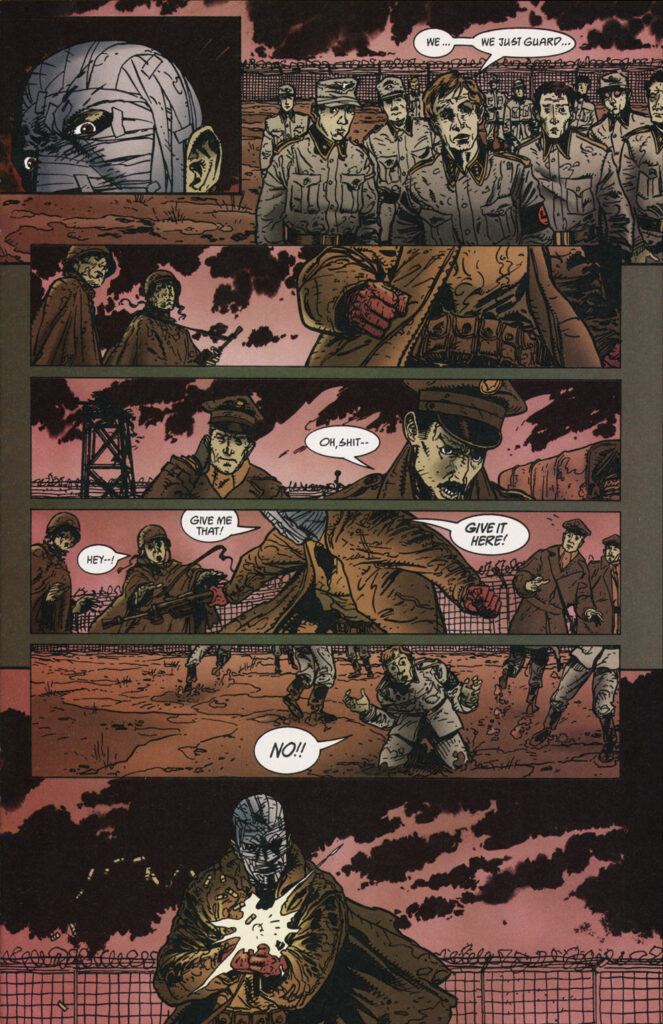
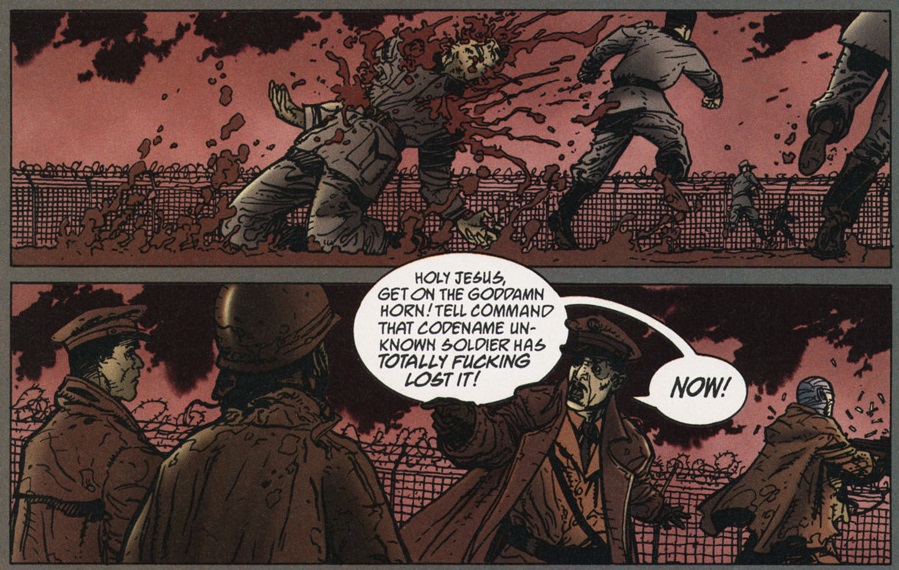
Unknown Soldier (v3) #1
That said, the previous stab at the franchise, by Christopher Priest and Phil Gascoine (back in the late 1980s), had already been committedly revisionist, so this one felt more like a variation on that earlier reboot than like the next logical step. The premise is basically the same: what if you take the Unknown Soldier out of the supposedly ‘clean’ war of WWII and throw him into the morally ‘dirty’ Cold War? The big difference is that, instead of seeing things through the soldier’s eyes, we now get an outside perspective. The mini-series is pretty much a Pakula-like conspiracy thriller following the principled CIA agent William Clyde in an investigation about the mysterious Unknown Soldier which takes him on a tour of the agency’s history of atrocities across the decades in places like Iran, Cambodia, and Nicaragua.
Technically, the series can share the continuity of previous stories, as the Unknown Soldier certainly fought in World War II and stuck around since then. Yet his characterization is a far cry from the one in the Priest/Gascoine comics… There, he constantly doubted and resented the Cold War doctrine; here, he becomes its sinister embodiment.
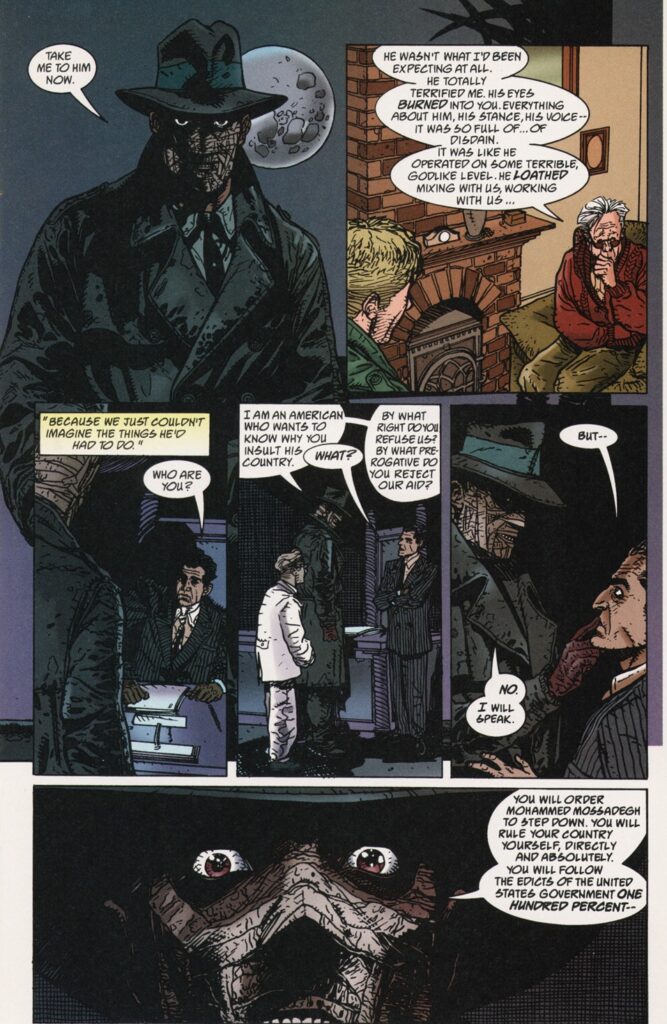
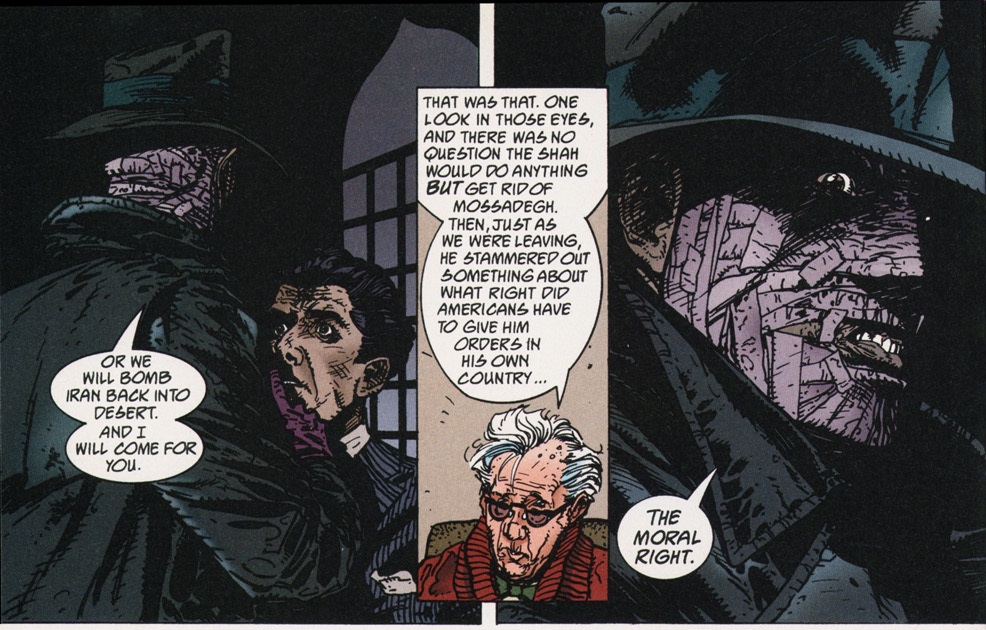
Unknown Soldier (v3) #2
As you may have gathered from the scans so far, the comic posits that the Unknown Soldier’s/United States’ sense of righteousness derives directly from World War II and the Holocaust, as he henceforth felt morally superior and entitled – even obliged – to do everything in his power to prevent anything similar from ever happening again. Putting a spin on one of the franchise’s long-running catchphrases (‘One man, in the right place, at the right time, can make a difference. And win a war.’), the series considers how a sense of purpose, idealism, and humanitarian concerns can be warped and taken to a fanatical extreme, with terrifying results.
If you believe you are in a messianic crusade against Evil (capital letter and all), then all sacrifices are deemed acceptable. This is what happened to the US: the mythologization of WWII (including in the earliest tales of the original Unknown Soldier) ultimately justified – in the minds of Washington’s policymakers and of the public in general – American exceptionalism, foreign interventions, and an endless state of war.
I’m not exactly reading between the lines here. The comic is not subtle:
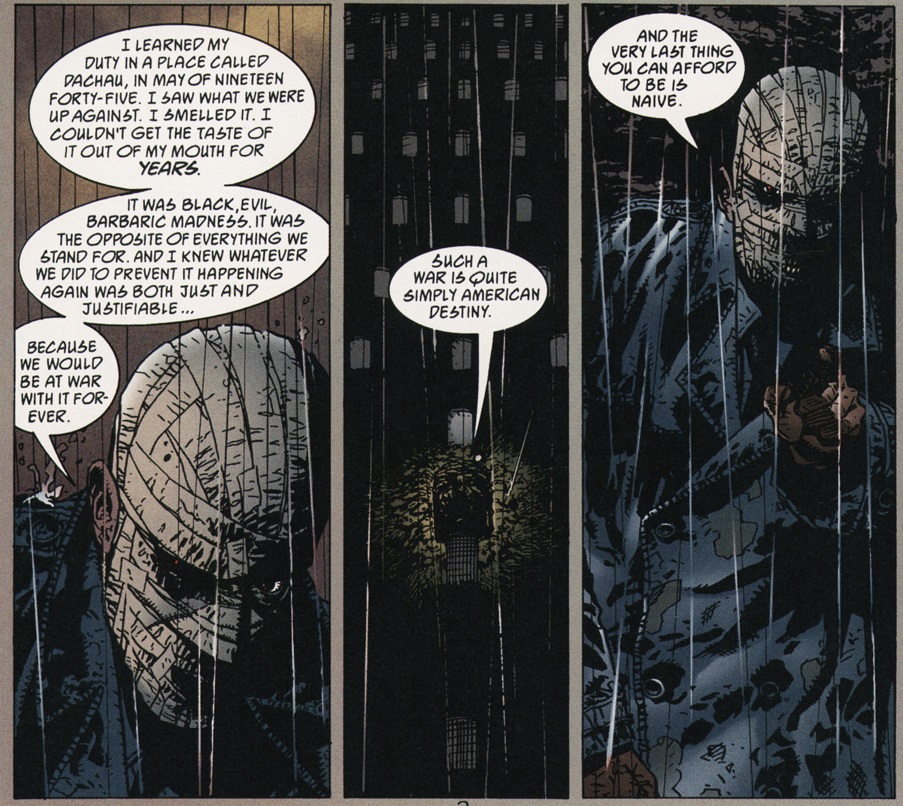
Unknown Soldier (v3) #4
(It’s not every day I get to compare a Garth Ennis comic to a short story by Jorge Luis Borges, but this seems to come from the same place as ‘Deutsches Requiem,’ which suggests that Nazism ultimately won, even if the Third Reich was destroyed in Germany, since WWII impelled other nations towards ‘violence and faith in the sword.’)
Visually, it’s hardly the most impressive Unknown Soldier comic. Killian Plunkett’s scratchy artwork and James Sinclair’s murky colors give the series a typical Vertigo look… I assume that’s part of the revisionist gesture, creating a deliberate contrast to earlier comics by making everything feel more somber and supposedly restrained (only the work of letterer Ellie DeVille occasionally evokes the potency of her predecessors).
For an Ennis-written comic, the action is largely forgettable, although at least Plunkett makes the most out of the one chance he gets to show off his John Woo-esque skills:
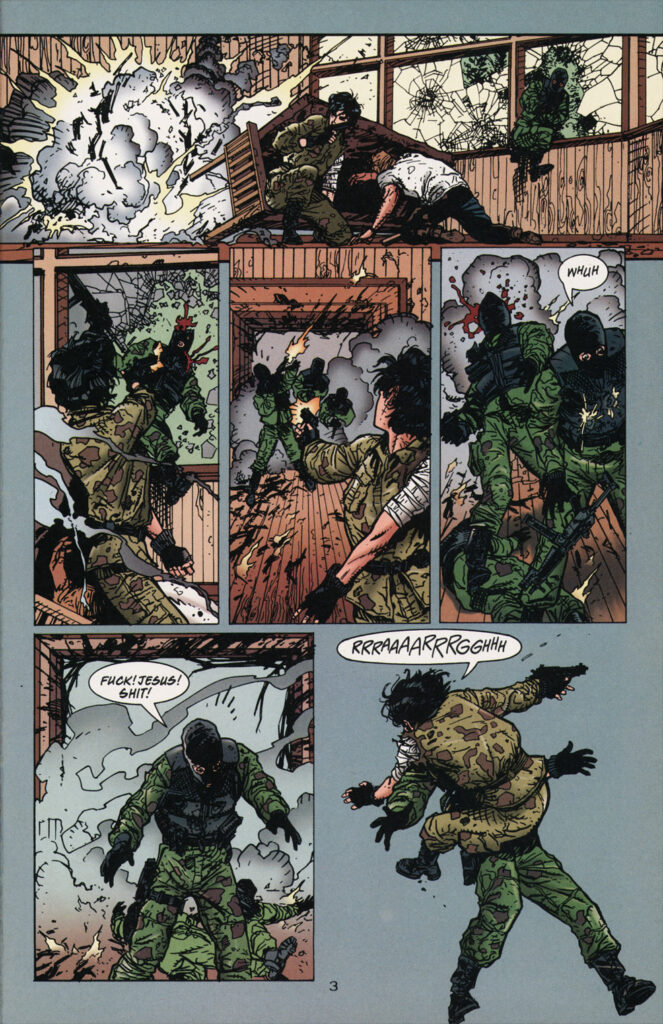
Unknown Soldier (v3) #3
I guess it *is* a Garth Ennis book at the end of the day, and not an uninteresting one at that. It surely displays Ennis’ technical knack for dialogue and pacing, not to mention several of his work’s recurrent thematic motifs, including the perennial clash between idealists and hard-nosed pragmatists. Hell, this reinvention of the Unknown Soldier may even retroactively be seen as a (less comedic) trial run for Ennis’ subsequent reinvention of Nick Fury at Marvel, where he also took an established gung-ho WWII character and used him to explore the United States’ global military engagement during and after the Cold War.
That said, this was still a younger Ennis (in his mid-twenties at the time) writing during the Clinton era (when foreign policy was increasingly presented as ‘humanitarian intervention,’ as opposed to the more self-defensive/preemptive doctrine following 9/11), so his script seems particularly unambivalent about denouncing and condemning what the Unknown Soldier stands for. By taking such criticism farther than in any previous iteration of the series, ultimately we do get quite an original contribution to the character’s evolving saga…
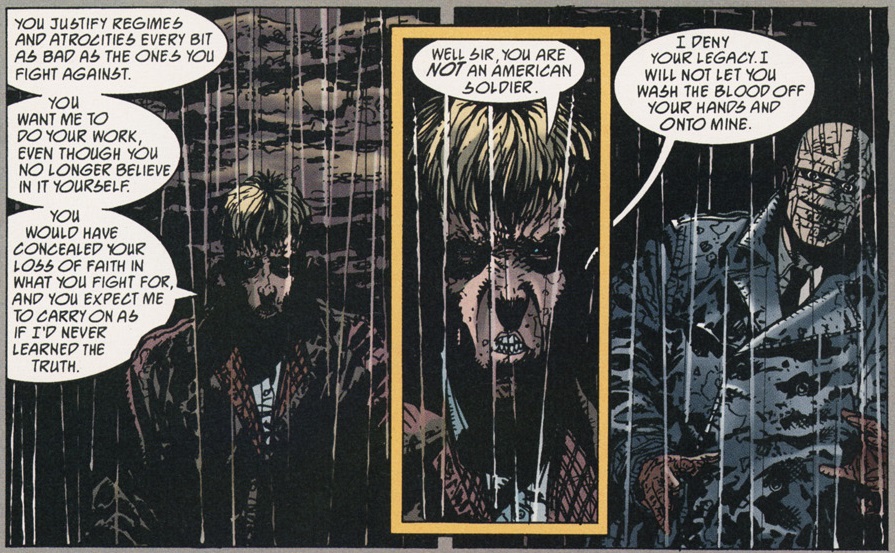
Unknown Soldier (v3) #4
You know what can be really awesome? Old pulpy, straight-to-the-point comic book covers:
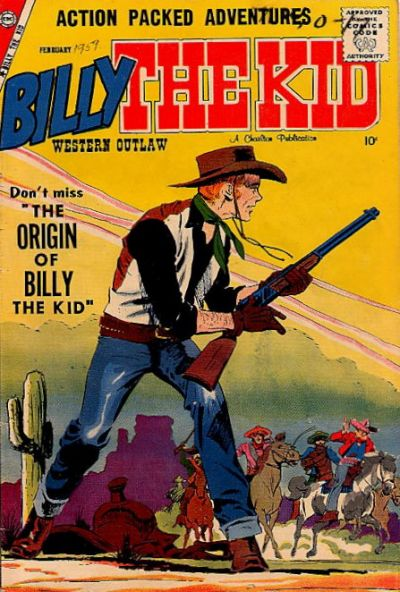
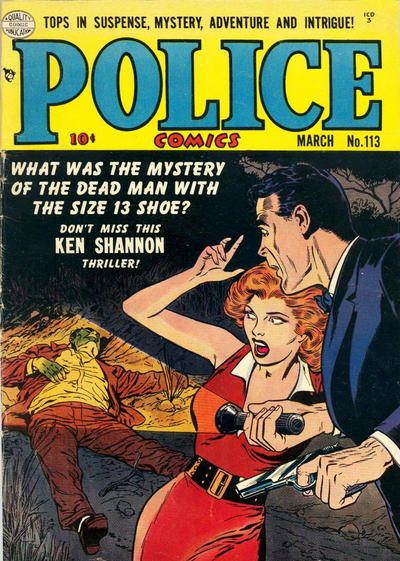
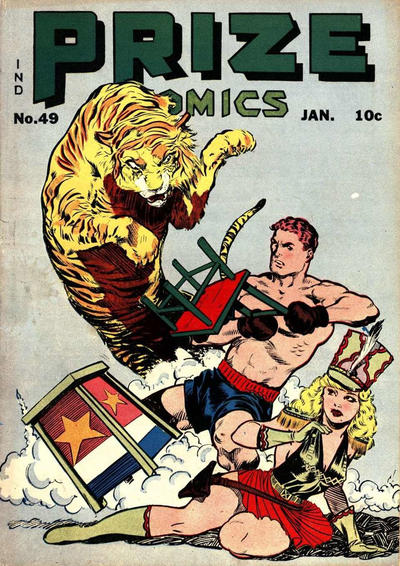
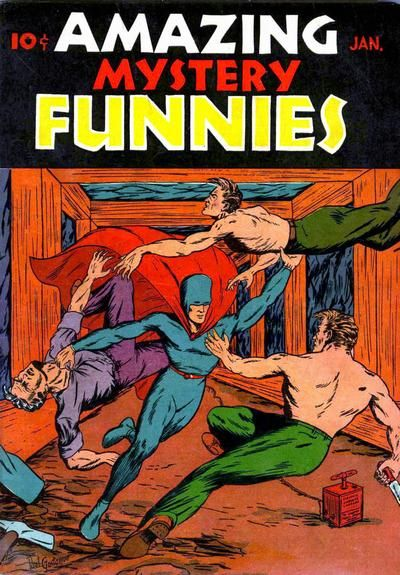
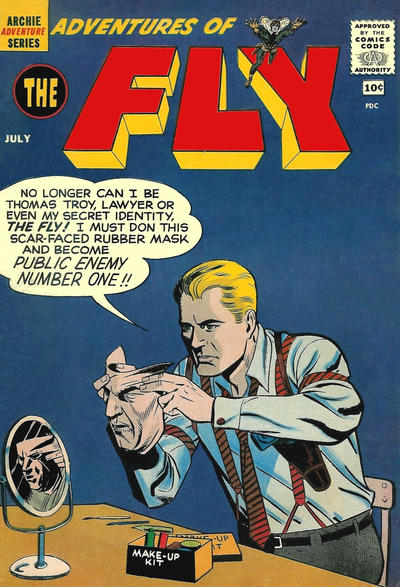
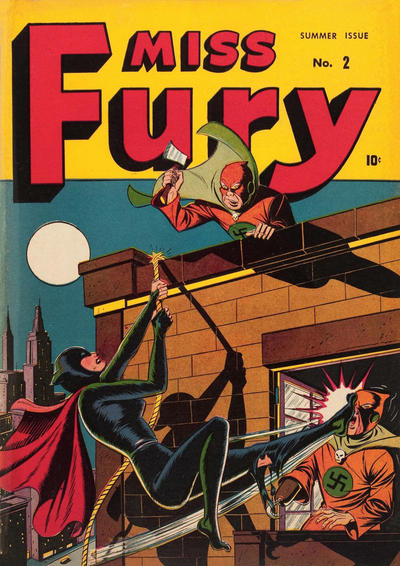
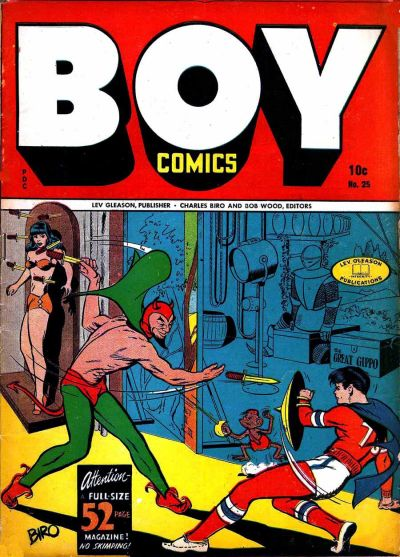
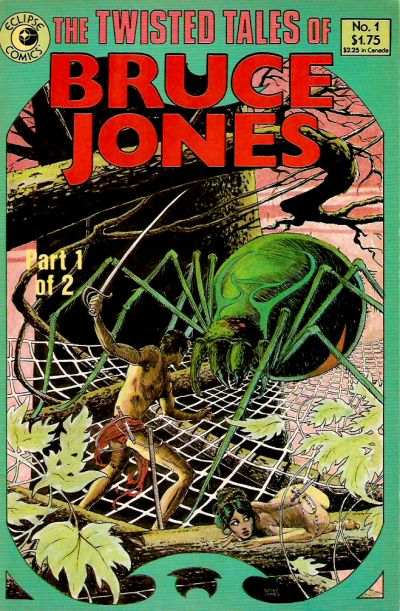
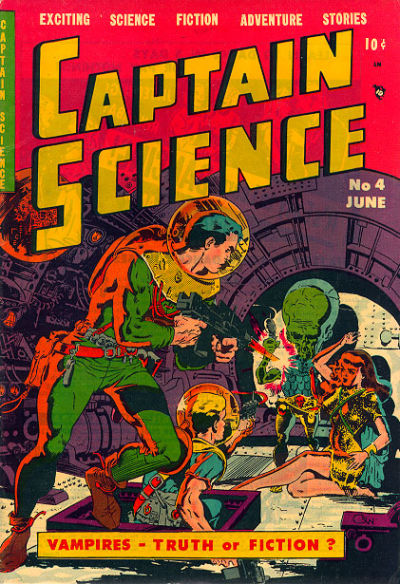
Last week I went to see Dune: Part Two, Denis Villeneuve’s epic about Afghanistan on an alien planet, which overcomes *some* of my reservations about the previous film. While the screen is once again filled with masses of anonymous blind followers/NPCs treated as mere cannon fodder by both their leaders and the filmmakers, we do get to finally meet a few non-elite people who eat and laugh and do things besides spouting ponderous bullshit about prophecies and bloodlines (although they do a lot of that, too). As far as sound and visuals go, the movie offers an impressive and immersive experience, with the focus largely shifting from imperial intrigue to the desert guerrilla, including some very exciting battles.
That said, the whole thing does come across like a slow-burn version of The Rise and Fall of the Trigan Empire…
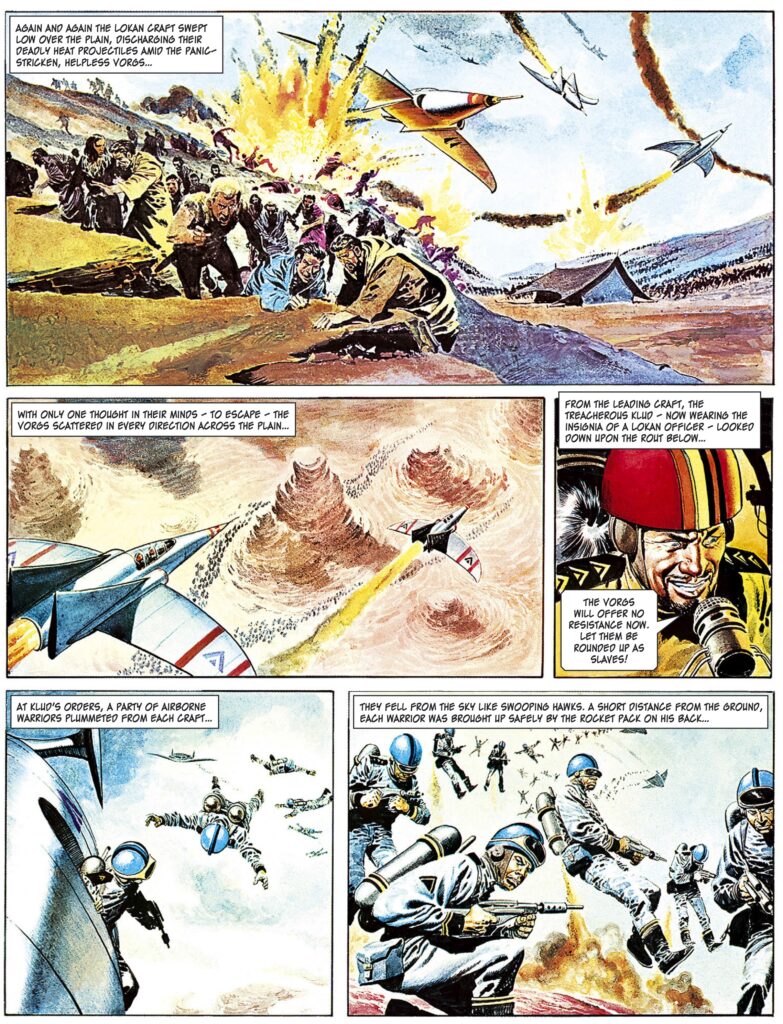
The Rise and Fall of the Trigan Empire: Volume 1
Don’t get me wrong, I’ve been having a blast reading the thick volumes collecting this saga, originally published in the UK in the 1960s and ‘70s. Like with Dune, much of the appeal derives from the stunning images, as the luscious painted artwork combines photorealistic pencils with psychedelic coloring. The stories aren’t very elaborated, although they do have a cumulative effect, gradually chronicling the development of a Roman-style empire on a distant planet, starting from a small tribe and building up to an interplanetary enterprise.
The series was originally published in very short installments (often just a couple of pages), so it moves at a frantic pace and the narration does plenty of heavy-lifting in terms of pushing the story forward, but even that works for me: it reads like those old legends where you get the gist of a story with varying degrees of detail, which further reinforces the feel of an epic passed down through generations… It’s like fast-forwarding through Games of Thrones, but with less sex and more spaceships.
Presumably there is some peace and prosperity between adventures, but by binge-reading these comics you get the impression that not a month goes by without the rulers getting manipulated by enemies or possessed by evil aliens. All we see is constant turmoil, with so many wars and invasions – not to mention so much back-stabbing and mind-control – that it’s a wonder the empire doesn’t immediately collapse, its masses either resentful or at least utterly confused by the elites’ erratic behavior.
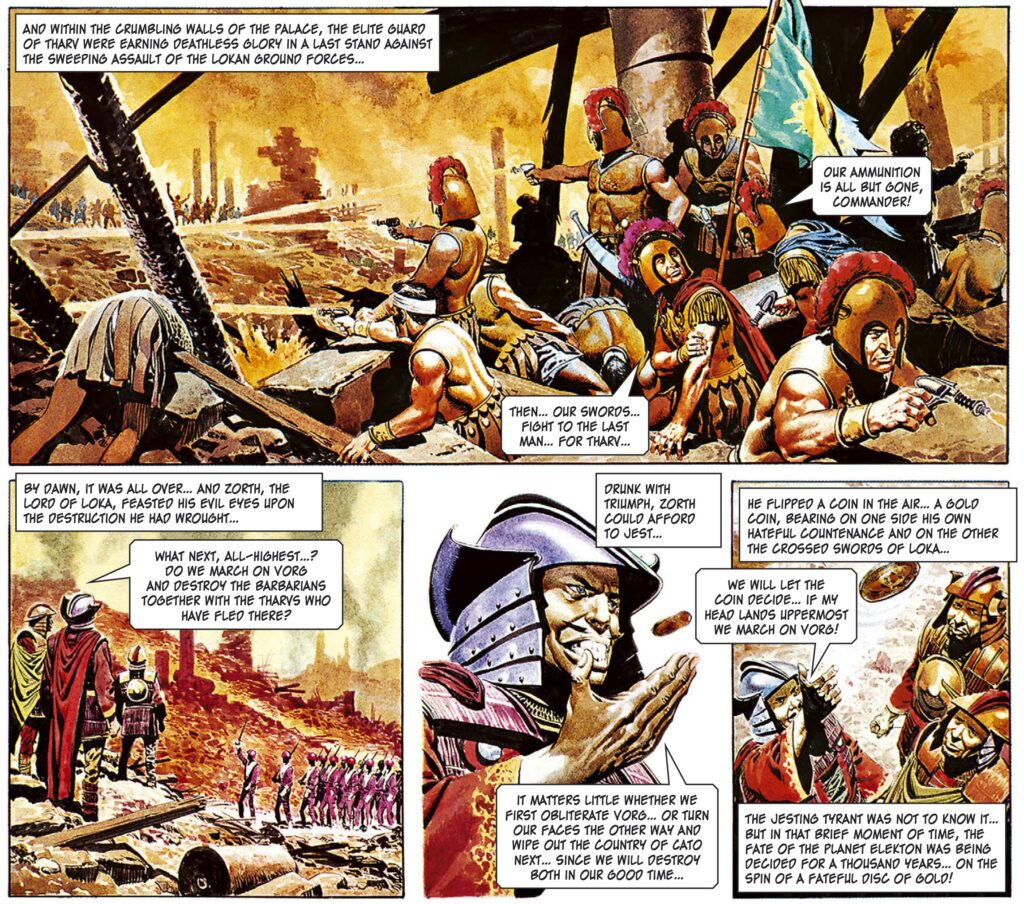
The Rise and Fall of the Trigan Empire: Volume 1
Given the imperial dimension, it shouldn’t surprise that this subgenre was so popular among British comics, whose Dan Dare, Pilot of the Future originally resembled an aspirational bastion of Englishness before becoming more of a cartoony parody in the likes of Peter Milligan’s 2017 mini-series (whose collection is cleverly titled He Who Dares, thus underscoring the military angle).
And just as yarns about space empires tend to fictionalize forms of colonialism and neo-colonialism, interplanetary war tales often turn into texts about anti-imperialist resistance. This is sometimes disguised by all the fantasy and, in the best cases, by original characterization that rises beyond mere allegory, but it’s such a blatant theme in most stories that you can hardly call it subtext. Still, there are very different ways of approaching this type of material (from the lighthearted thrills of The Midas Flesh to the metafictional satire of Six-Gun Gorilla, to highlight a few), each with their own implications.
If you want to find a pure treatment of the subject, look no further than the late 1970s, when British comics tended to be raw-as-hell and in-yer-face, so there was little ambiguity (or nuance) about the overall point…

Tornado #1
Take, for example, The Angry Planet – originally published in the anthology Tornado and collected a few years ago by Rebellion and Hibernia – in which Earth’s relationship with Mars in 2092 is an obvious stand-in for the First World’s relationship with the Global South in the late 20th century. The main villain is a capitalist corporation – Mars Inc. – which mercilessly exploits the red planet’s resources while keeping the local population (i.e. Martian-born humans) in check through its monopoly of the water supply… until one of the farmers, Matt Markham, gets fed up with the whole thing and kickstarts an independentist armed struggle, his guerrillas compensating for the asymmetrical weaponry through creativity and their greater familiarity with the territory.
The series was written by Alan Hebden, a specialist in action-packed war comics (like Death Squad and Fighting Mann), and he seems to have simply transposed his research notes about Ho Chi Minh and Che Guevara onto outer space. Since Hedben is more about bombastic cliff-hangers than psychological character development, the result is fascinatingly straightforward: you are left with a very surface-level metaphor, albeit peppered with the typical gonzo style of the era’s genre comics, including a tyrannical security chief called The Samurai and a pack of killer robot dogs called Dogroids. (In any case, if nothing else, Angry Planet would be worth it just for Massimo Belardinelli’s fabulous artwork, which instills every set piece with breathtaking visual wonder.)
Soon after, another British comic proposed a more cynical take on the genre. Created by Gerry Finley-Day and Dave Gibbons, the original Rogue Trooper (serialized in 2000 AD in the ‘80s) followed a war of attrition between two human factions – the Southers and the Norts – on the planet Nu-Earth. The series loosely echoed different real-world conflicts and, on the whole, the Norts were more unabashedly despicable (which suggests a classic anti-imperialist indictment of the Global North), but the point was clearly that, at the end of the day, this was a war between imperialisms, where the main loser was the little guy (bear in mind that by the time the series entered its second year the UK was embroiled in a new conflict, the Falklands War).
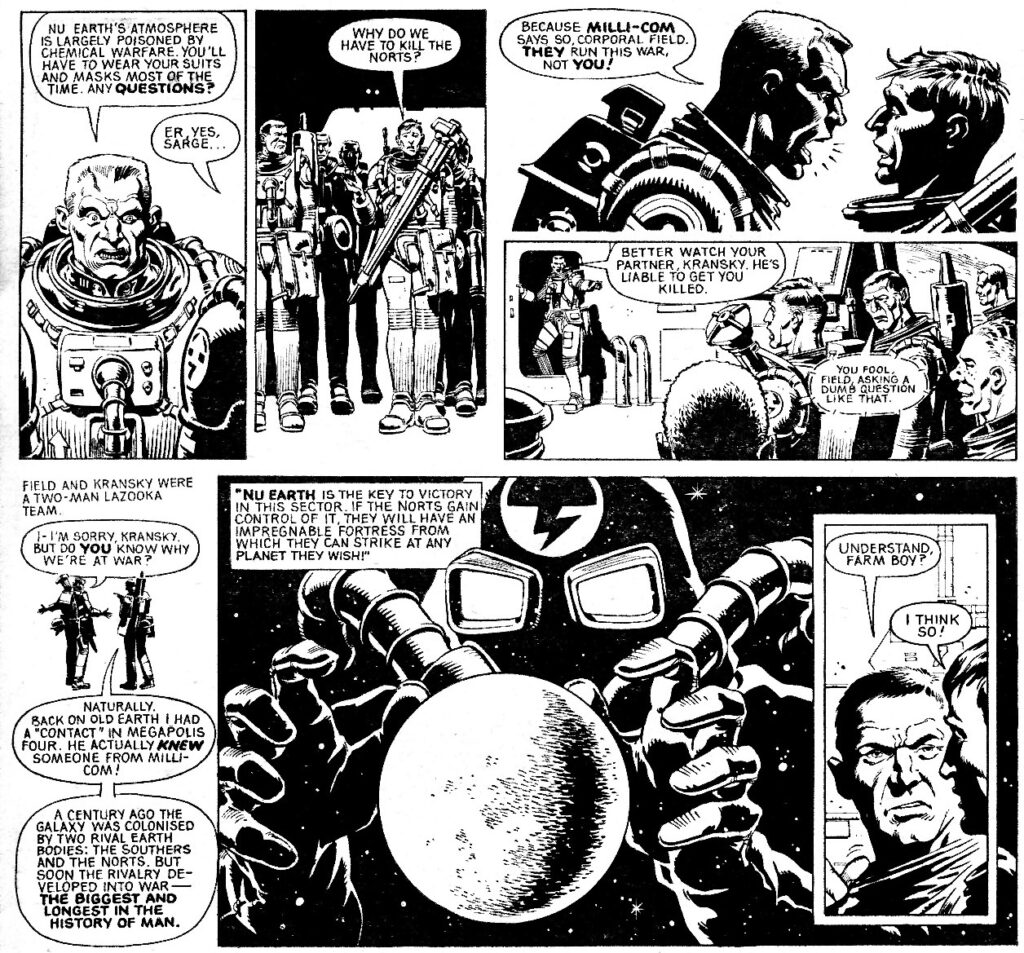
2000 AD #239
That said, overall Rogue Trooper was more interested in warfare as entertainment than in any kind of direct analogy. Yes, its chemically devastated battlefield was a powerful post-apocalyptic vision and there were occasional statements about war, but the metaphors kept shifting from episode to episode. Combat action beats were intercut with 2000 AD’s propensity for surreal comedy and silly puns, including Nort poisoners infiltrated behind Souther lines, cheekily labelled ‘filth columnists,’ and a demented resistance cell with outrageous French accents that called itself the Napoleonic Complex (and which named a theater after the series’ protagonist: Moulin Rogue).
On the big screen, the approaches don’t tend to be either as ferociously revolutionary or as wildly iconoclastic, although Star Wars has notably gotten away with plenty of weirdness. That franchise has always had a political edge, whether it was A New Hope responding to the Vietnam War (with the Empire cast as the villain and the rebels as heroes) or Revenge of the Sith evoking the War on Terror (with Darth Vader paraphrasing George W. Bush as the democratic Republic turned to tyranny). Personally, I’m fond of the attempts to frame the conflict from a more street-level perspective, like in Rogue One and Solo – both those movies were pretty uneven (no doubt because of director/producer clashes) and featured some eye-rolling fan-pandering, but I dig how they fleshed out this galaxy from a lumpen POV. And then, of course, came the show Andor, which got it right at almost every turn, zooming in on the mixed feelings of the colonized as well as on the petty bureaucratic disputes of the fascist system.
That focus on the grunts fighting on the ground and not just on their leaders is what elevates some the coolest military science fiction in my book, even allowing it to get away with the complete dehumanization of extraterrestrial enemies, as in Aliens or Edge of Tomorrow. The former, by the way, immediately inspired a number of awesome comics.
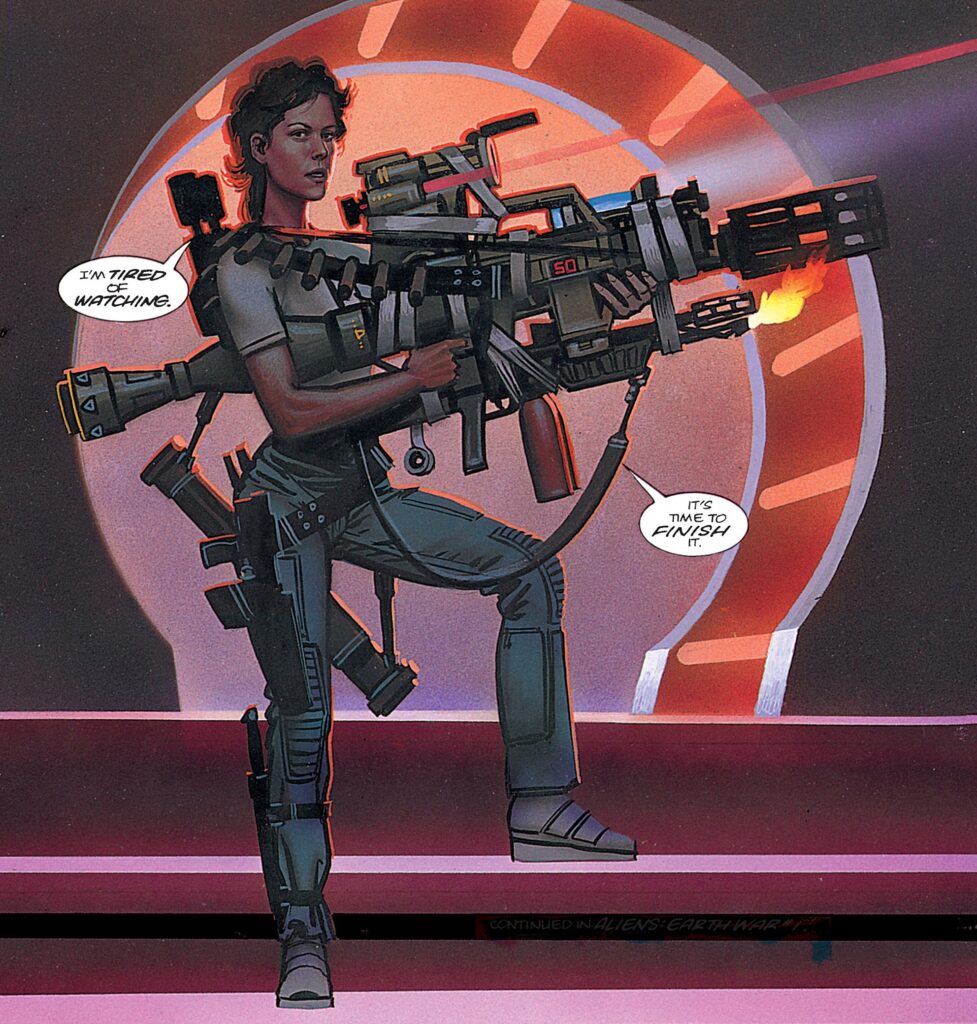
Aliens: Nightmare Asylum
By contrast, Dune feels more like a throwback to The Rise and Fall of the Trigan Empire, with its earnest tone and macrolevel point of view. Surely, there is something provocative about the way Villeneuve’s films gear up viewers with a righteous liberation struggle against colonial oppression and exploitation while simultaneously dramatizing the tragic rise of warmongering religious fundamentalism, but I can’t quite decide whether the somber, straight-faced orientalist imagery ironically reinforces or undercuts the effect. On the one hand, you’d think the timing is right to complicate easy narratives about Ukraine or Palestine. On the other hand, the whole thing is still too clean, shying away from dealing with civilian casualties or from humanizing combatants (the latest film takes great advantage of the desert setting, as most fighters wear face masks, so we don’t witness their suffering or possibly conflicted emotions…). We’re invited to see them as generals do: disposable pawns in a larger game. In that sense, this Dune depressingly feels much in tune with the current acceptance of atrocities in the name of fantastical myths.
This week’s reminder that comic book covers can be awesome is a tribute to superhero yarns, the most quintessential of the medium’s genres. Sure, superheroes have had their fair share of ventures into the big and small screens (from the old serials to MCU’s blockbusters, not to mention bonkers counter-cultural reappropriations of the genre’s iconography by the likes of William Klein’s Mr. Freedom), but it’s comics that have done the most to expand, revise, update, and even subvert the concept. Along with classic takes that played it straight or experimental works that pushed the storytelling potential to new heights, you have all sorts of offshoots entertainingly speculating about how supernatural powers could reshape the world (in the same way that, say, technology and finance already do), whether it’s Suicide Squad exploring the Reaganite geopolitics of the DC Universe or Astro City dramatizing the inevitable collateral damage (I’m thinking, for example, of Astro City (v3) #50-52, a beautiful arc about a support group for civilians traumatized by superhero battles).
And just by looking at the covers, you can see how this weird genre has evolved over time, approaching the material from various angles and with very different sensibilities:
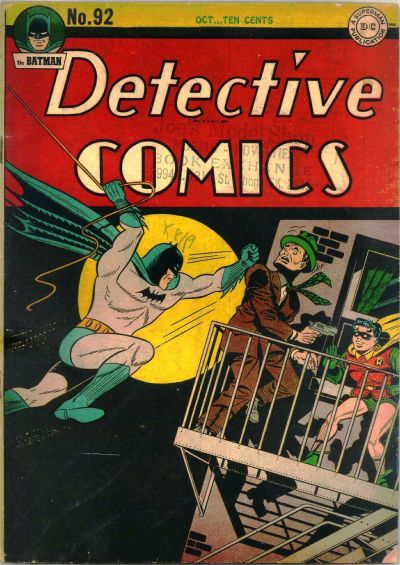
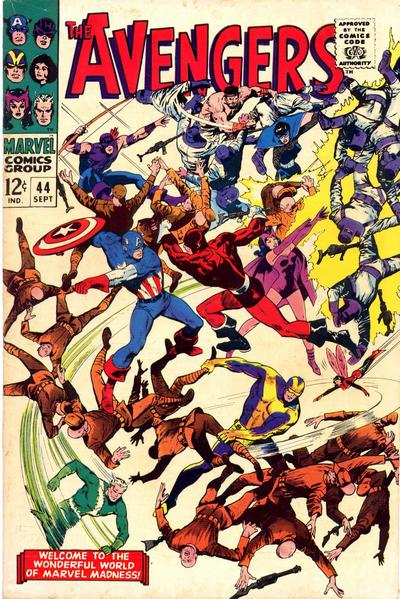
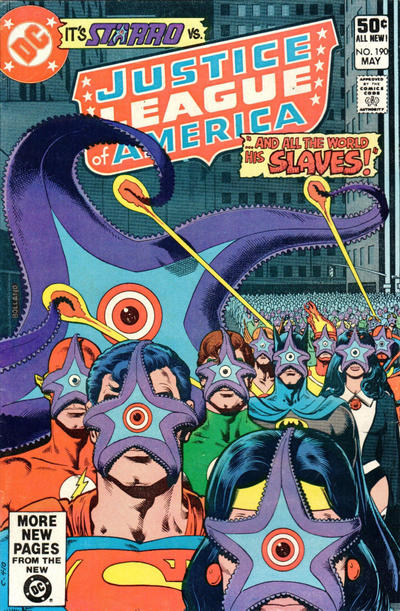
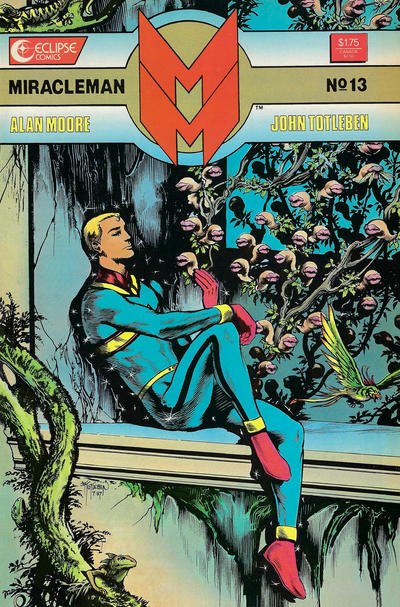
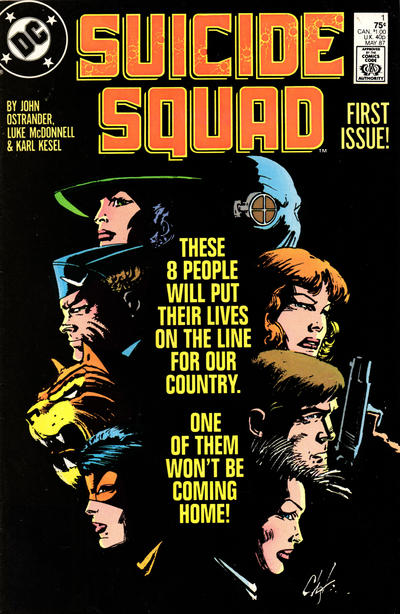
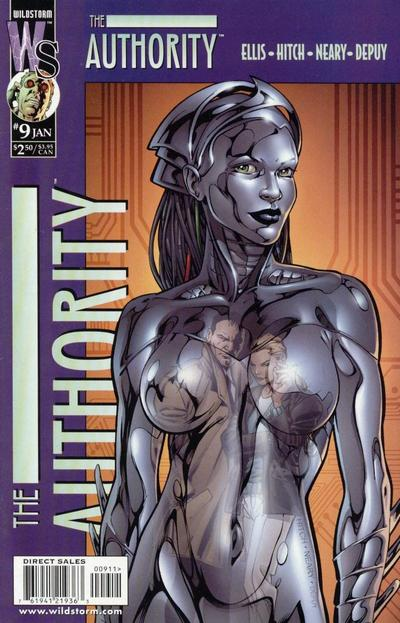
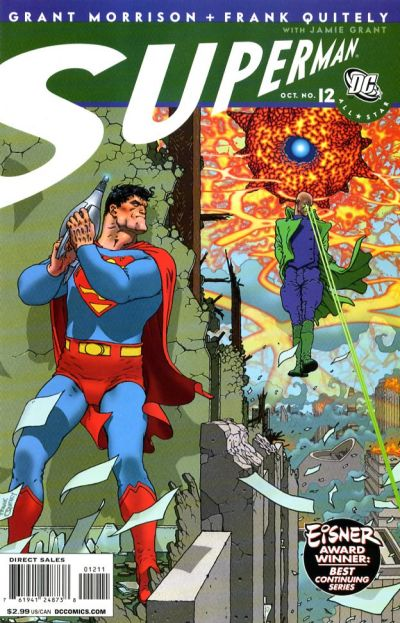
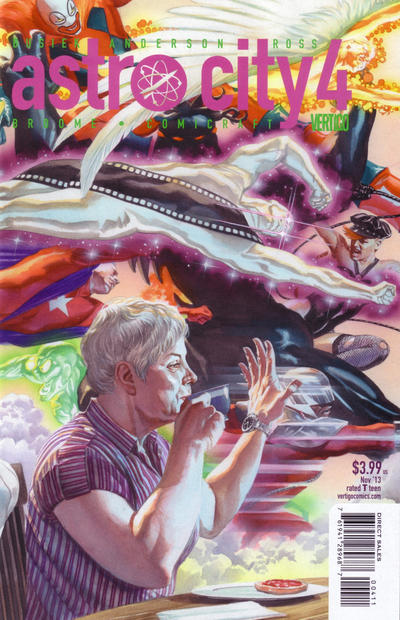
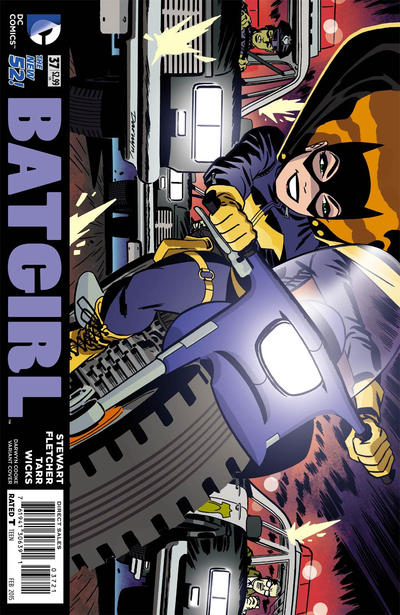
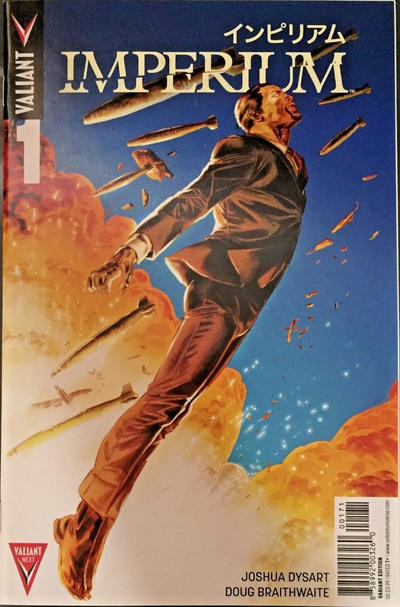
While ultimately no comic could top Shubeik Lubeik as Gotham Calling’s book of the year, there were strong contenders I left out but which I think deserve highlighting anyway… Now, I haven’t been reading as much as I used to, so I’m sure I missed some cool works throughout the year, but there were still plenty of times when I found myself reinvigorated in my passion for this medium.
With that in mind, here are half a dozen comics from my 2023 shortlist, in alphabetical order:
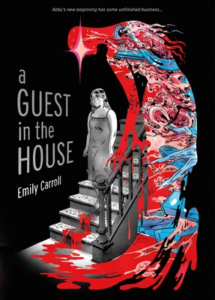
A psychodrama that escalates into full-blown horror, this terrific graphic novel delves into the anxieties of Abby, a young woman living in a creepy house by the lake with her older husband, his teenage daughter, and the looming, phantasmagorical presence of his dead wife. The main strength of A Guest in the House is the way it gets us inside Abby’s head – like Shubeik Lubeik and a couple of other books on this list, this work takes great advantage of comics’ ability to let us visualize mental states. Along with a sensitive and unsettlingly ambiguous script, Emily Carroll’s powerful drawings thoughtfully render Abby’s haunted relationship with the people and elements around her, not least by occasionally tinging the black & white artwork with dreamy touches of red and other colors, expanding the technique used in the later volumes of Miller’s Sin City and, to an even greater effect, in Strömquist’s Fruit of Knowledge (notably in the chapter on menstruation).
The premise, of course, riffs on Rebecca, What Lies Beneath, and countless other yarns about insecure wives questioning their sanity while suspecting something is afoul (there is even a turning point in which the protagonist gets a radical haircut, like in Rosemary’s Baby), but Carroll is an intelligent writer who uses familiar tropes to play with readers’ expectations, leaving us unsure about what is real and what is imagined until the shocking ending.
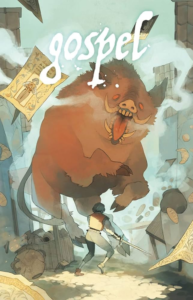
In 16th-century England, amongst the tumultuous antipapist reform, a young green-haired girl and the Moorish scribe who chronicles her adventures set out on a swashbuckling quest to fight the Devil. As entertaining as it is intriguing, this is one of those original comics where I was never entirely sure what to expect: on the one hand, much of Gospel reads like a carefully crafted period piece; on the other, even setting aside the supernatural elements, the book is peppered with anachronistic touches, from a character using air quotes to the local population’s general acceptance of the unconventional heroes.
The apparent inconsistencies are eventually explained, as Will Morris confidently weaves multiple layers into the narrative, resulting in a Gaiman-esque ode to storytelling itself (from the Bible to history books, from fairy tales to self-delusion). That said, what enables Morris to pull off such a balancing act is his sharply clean – and engagingly bouncy – artwork. Like most items below, this is one of those books that I’ll certainly revisit in the future, picking it up off the shelf and flipping through the pages for the sake of pure visual delight.
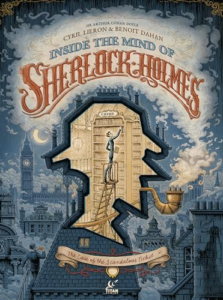
If there was a second place on my top 2023 comics, it would definitely go to the English translation of Inside the Mind of Sherlock Holmes. It’s not just that this is a wonderful Sherlock Holmes mystery, although it surely is that as well, what with the sprawling chain of clever deductions, the droll characterization (perfectly in sync with the couple of Arthur Conan Doyle novels I’ve read), the Victorian steampunk aesthetics, the tragic villain with an eccentric plan, and the elaborate story informed by the time period (most notably the infamous Opium Wars) leading up to a viciously ironic ending.
What makes this book shine is that Cyril Lieron and Benoit Dahan show us Holmes’ thought process throughout the case, whether by peeking inside his head (which looks like a house full of archives and props where the detective gets to literally rearrange his memories and ideas) or by having a thread connect the various clues and locations. By brilliantly illustrating the act of reasoning and processing information rather than confining it to verbal exposition (like in the original texts and in most audiovisual adaptations), we get a work that feels constantly dynamic and visually mesmerizing beyond the occasional action set pieces (even if those are also pretty incredible). Moreover, besides the superbly designed layouts, we get all sorts of extra touches appealing to readers’ playful side: looking at some pages through light reveals hidden details, curbing or folding other pages changes their meaning… In other words, more than a great Sherlock Holmes comic, this is a book that really makes the most out of the medium’s potential.
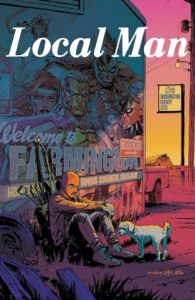
The latest take on the subgenre of smart, R-rated superhero comics follows Crossjack, a disgraced hero forced to move back to the small town he came from, where he’s forbidden from fighting crime (under a copyright infringement law), which becomes a particularly tricky issue once he gets falsely accused of murder… The meta twist is that Crossjack used to belong to the type of outrageously *extreme* super-team you could find on the pages of 1990s’ Image Comics, retroactively fitting him into that shared universe.
Ten years ago, Tim Seeley had already written one of the niftiest reboots of early Image properties, the underrated Bloodstrike, but that one slickly updated the original concepts and sensibility while Local Man – co-created with Tony Fleecs – is more about exploring the publisher’s evolution. The main story (with art by Fleecs, moodily colored by Brad Simpson) is told in a decompressed, relatively understated tone, not unlike That Texas Blood, in sharp contrast to the back-up flashbacks (drawn by Seeley with deliberately garish colors by Felipe Sobreiro) rendered in the bombastic, trying-hard-to-be-awesome style of Rob Liefeld, Jim Lee, or J. Scott Campbell, complete with over-the-top cheesecake and exposition-heavy dialogue. Thus, the series applies to 90s’ comics the same sort of amusing pastiche-and-contrast approach that those comics (most notably Alan Moore’s Supreme) used to apply to the Golden and Silver Ages… And sure, the actual plot isn’t particularly inventive, but I can’t resist the way Local Man works both as a love letter to the silly source material (many of the heroes’ preposterous designs are based on the creators’ own pre-professional work, going back to their teens) and as a meditation about embracing maturity.
(The first volume, Heartland, doesn’t yet collect the special Local Man: Gold, which came out in the meantime and pushes the tribute to Image’s history even further by crossing over titles as disparate as Cyberforce, Street Angel, Battle Pope, and Love Everlasting, among many others!)
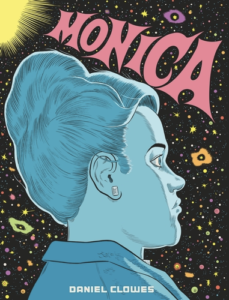
Daniel Clowes’ latest genre-bending tour-de-forceis one of those graphic novels that invites multiple reads… and multiple readings. Superficially, it looks like an indie anthology of interconnected stories, many of which seem inspired by old comic-book traditions, such as war, romance, horror, and crime tales. While admittedly riffing on EC’s artists, though, Monica is not a full-on pastiche, as the cast brazenly sound like Clowes’ typical alienated, sardonic characters (‘you’re not really special, just the unwanted fetus of two random fuck-ups caught in a confusing historical moment’). On a more direct level, the narrative tapestry adds up to the life story of the titular daughter of a free-wheeling hippie, who grows up to be, at different points, a successful business woman and a member of a creepy, decrepit New Age cult. Monica tries to piece together what happened to her long-gone mother and the identity of her father, but this obsession with her biological roots is ultimately part of a wider reconstruction of some of the darkest corners and legacies of America’s flower power era. Then again, the chapters slightly contradict each other (and the tone veers jarringly from ultra-realism to utter fantasy), so you may wish to reinterpret some of them as hallucinations, as stories-within-the-story written my Monica or by the ersatz-Clowes who shows up later on, or merely as the product of unreliable memory/information/narration.
If this sounds too meta and formalist, it is to Clowes’ credit that he still manages achieve a compelling, emotionally resonant sense of isolation and personal anguish amidst his signature blend of heartbreaking moments and pitch-black laughs.
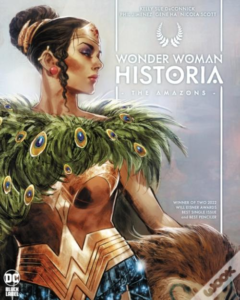
DC’s Black Label has been putting out some of the coolest comics out there, in terms of both original concepts (my gushing praise for The Nice House on the Lake here) and neat takes on existing properties (Jock put the larger format and his street art-infused style to very good use in One Dark Knight, which reaches the intensity of an episode from the first season of The Bear). Still, Wonder Woman Historia: The Amazons didn’t exactly seem aimed at me… It’s yet another origin story of a major character (I’ve grown quite sick of those) done as a portentous epic geared more towards mapping a vast mythology than towards properly developing each cast member. Despite the misleading cover, the book isn’t about Wonder Woman, but about the creation of the Themyscira community in which she was raised (the backmatter indicates the project’s inspiration came from the initial minutes of 2017’s Wonder Woman movie) – and I would’ve been very happy to read a fun sword & sorcery adventure starring the Amazons fighting gods, but this is essentially the first act of a larger saga. Hell, it feels like the foreword!
Oh well, the same can be said for Batman: Year One, so I suppose you can get away with it as long as the book has a talented creative team at the top of their game. I’m glad to say that’s case here. I usually enjoy Kelly Sue DeConnick’s work and, sure enough, her punchy narration – beautifully rendered by the magnificent letterer Clayton Cowles – did a lot to win me over, even if the best bits were when she stopped setting things up and just approached all these pantheons and legends as a playground in which to unleash crazy action. Deconnick does a particularly fine job of writing to each artist’s strengths, letting Phil Jiminez introduce this cosmic opera through maximalist, packed-to-the-brim pages in which every single millimeter and design choice seem to have been the result of lengthy research and serious consideration. She gives Gene Ha a relatively more grounded chapter, more focused on Hippolita and a couple of other key figures, with greater emphasis on human drama, close interactions, and facial acting. Suitably, Nicola Scott then gets to put her ethereal pencils in the service of a glorious climax where the clash of realms lends itself to the sort of iconic images that could fit in a classical art museum.
That said, the colorists are the real stars here. Jiminez’s hyper-detailed compositions are elevated to even more intense vibrancy by the trio of Hi-Fi, Arif Prianto, and Romulo Fajardo Jr, whose hues help sustain the book’s balance between storytelling and pageantry. In turn, Wesley Wong imbues even the most ‘mundane’ panels with a mystical, nocturnal atmosphere, while Annette Kwok brings out the painterly quality of Scott’s ink-washed drawings. The result is nothing short of breathtaking.
Just a nightmarish reminder that comic book covers can be awesome:
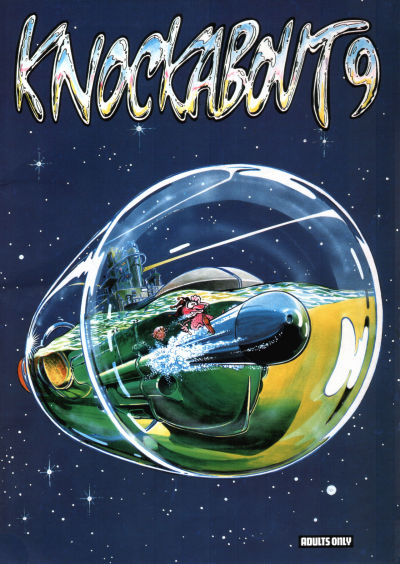
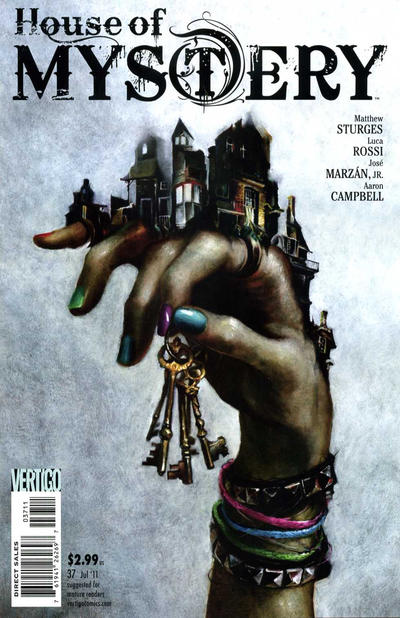
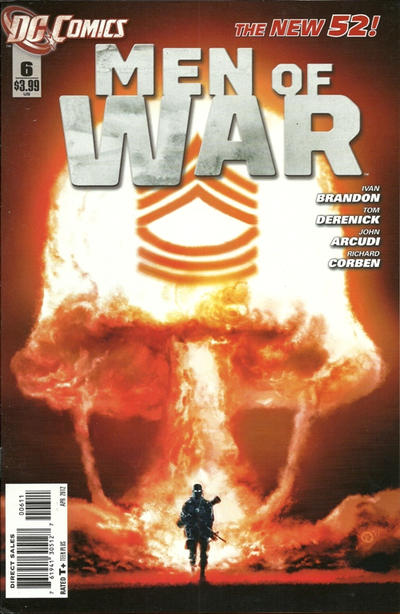
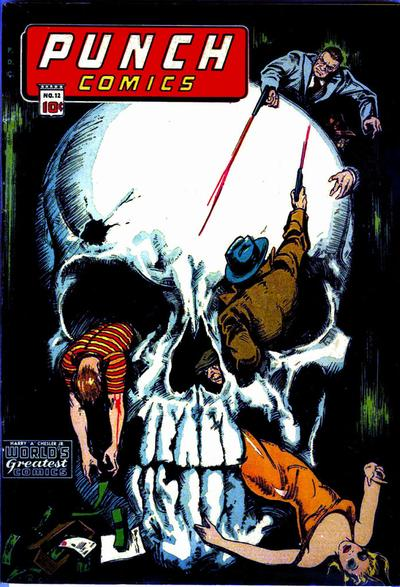
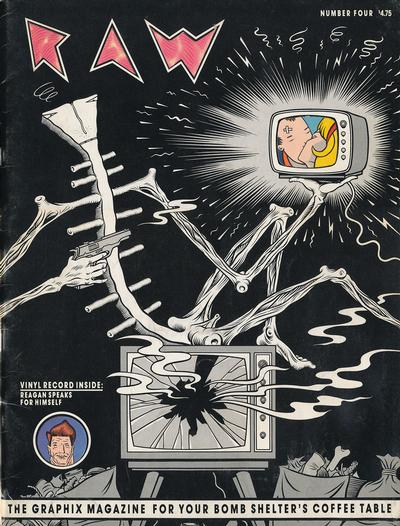
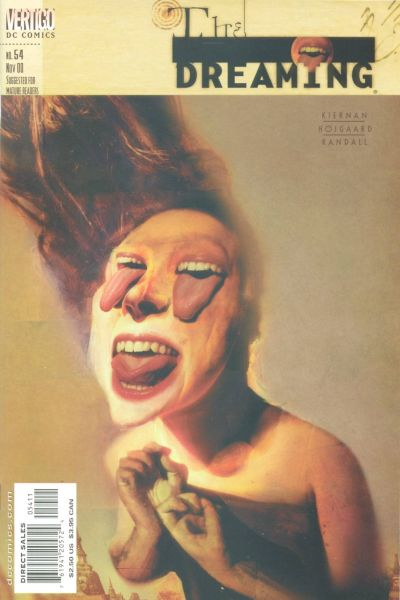
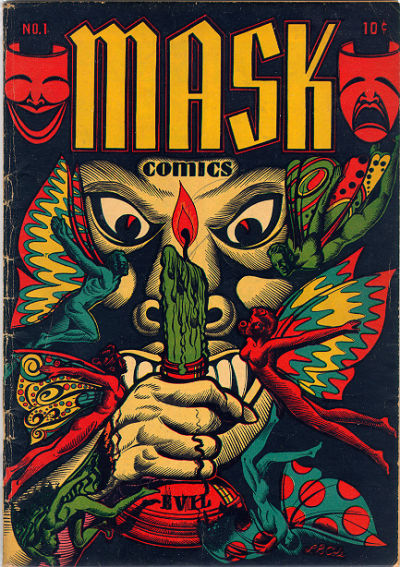
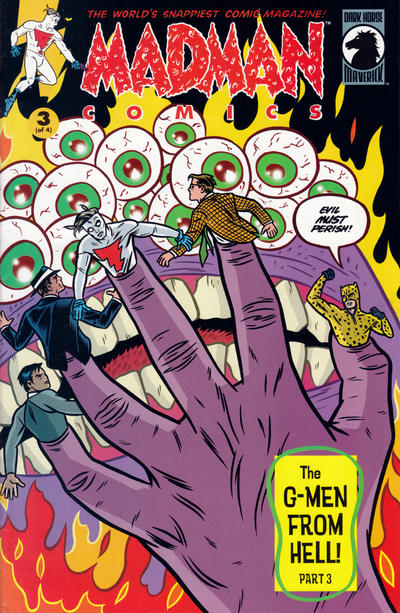
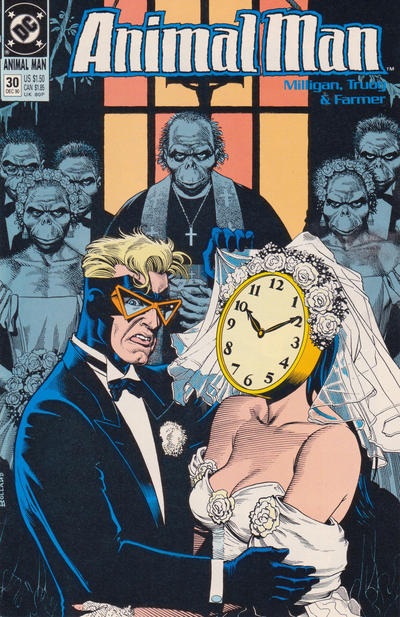
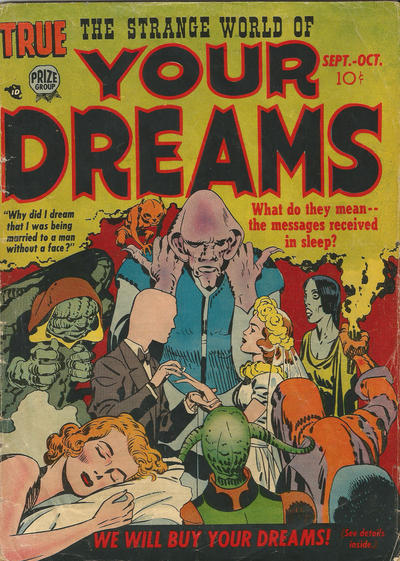
This is Gotham Calling’s 700th post!
I like to mark these occasions with something special and it occurred to me that it’s been a while since my last post celebrating the Caped Crusader’s tendency to acrobatically kick – or sometimes knee – his opponents in the head. It’s a trope that never gets old, as it plays to the strengths of both artists (who get to draw Batman pulling off incredible moves) and letterers (who have a chance to go nuts with their sound effects). Plus, writers sometimes join the fun by giving the Dark Knight a badass one-liner to accompany the aggression (like the classy pun ‘Too bad I can’t kick his addiction.’), thus supplying the lyrics to go with the artists’ dance choreography and the letterers’ music.
Here are yet another fifty examples of extravagantly performative violence:
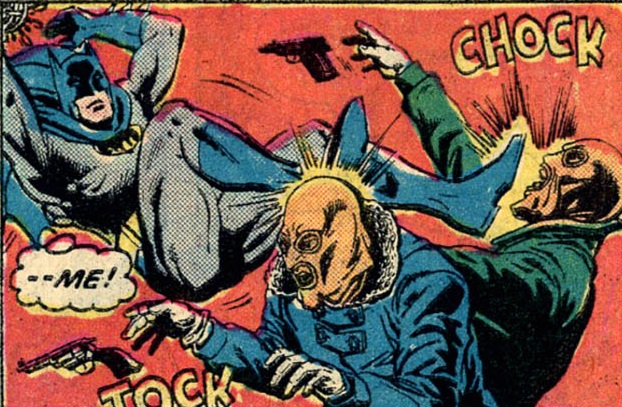
Batman #264

Batman #269
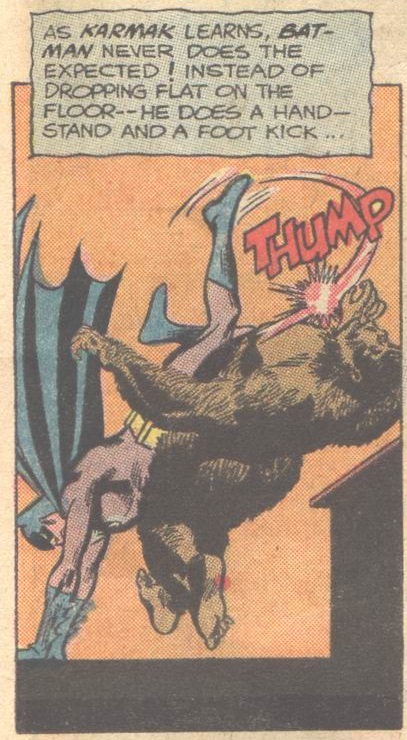
Detective Comics #339
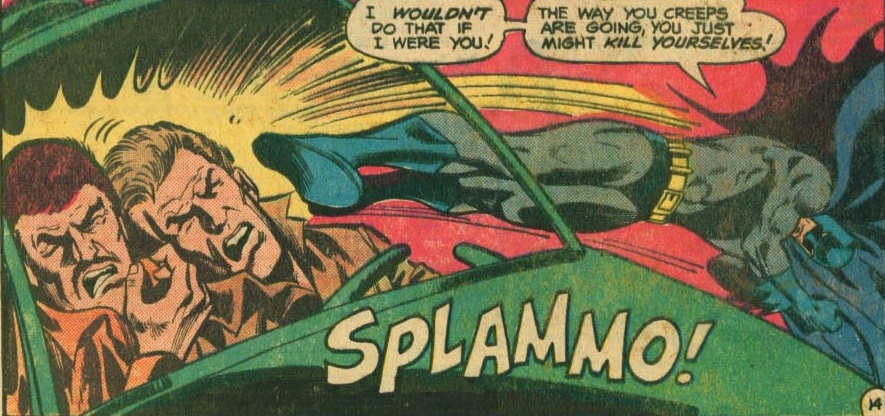
Batman #330
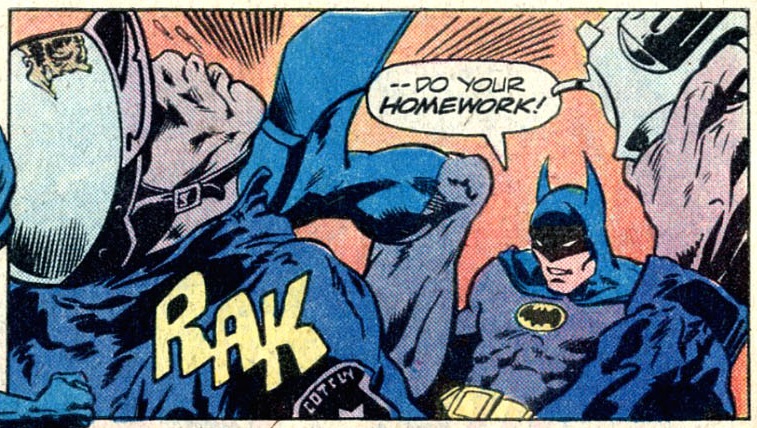
Detective Comics #483
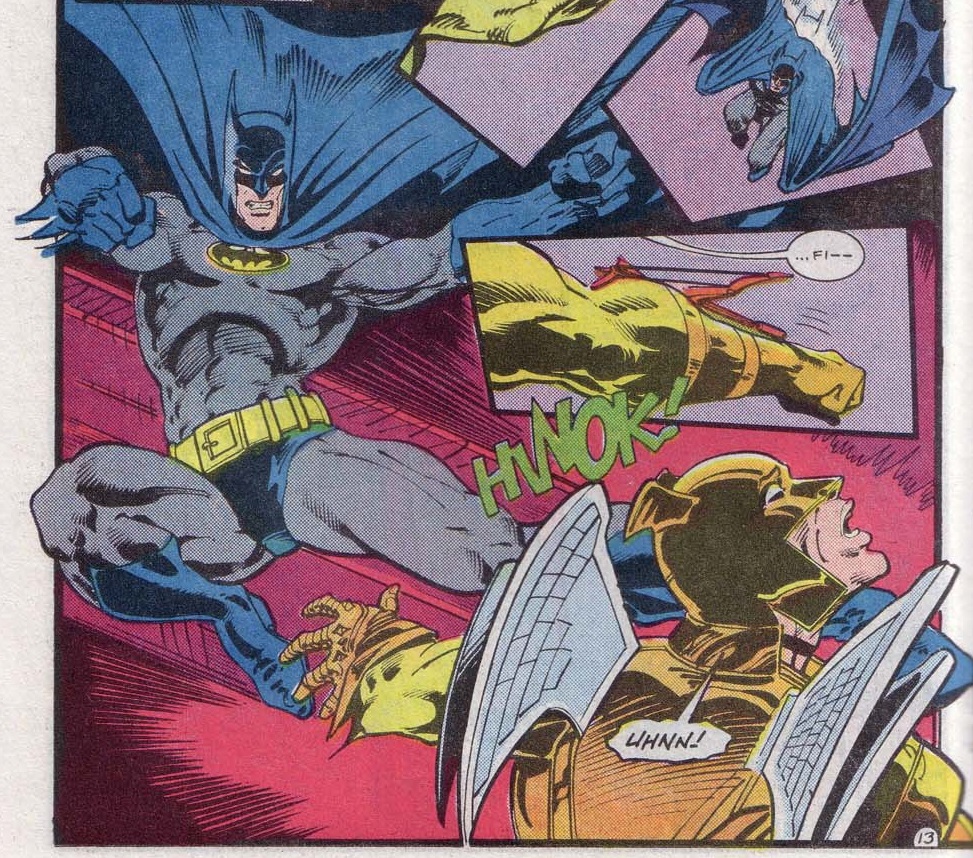
Detective Comics #551
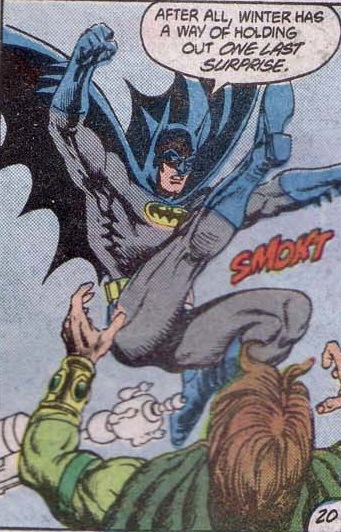
Batman #385
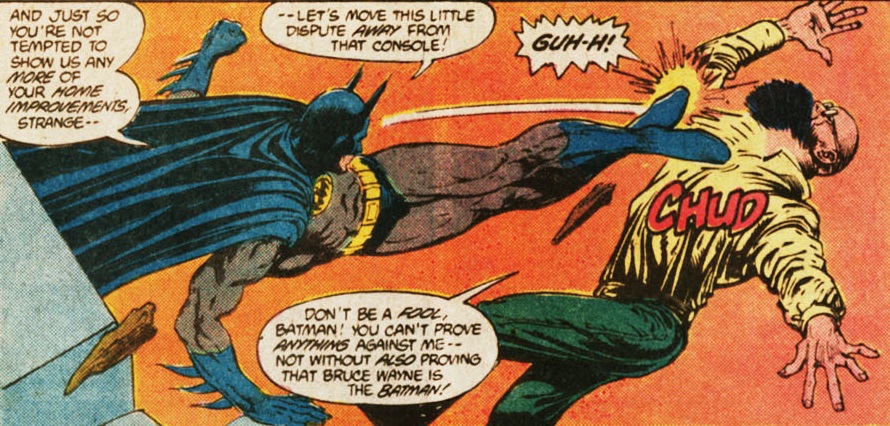
Batman Annual #10
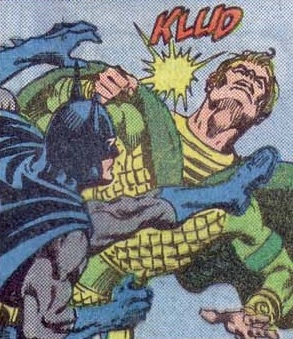
Batman #385

Batman #396
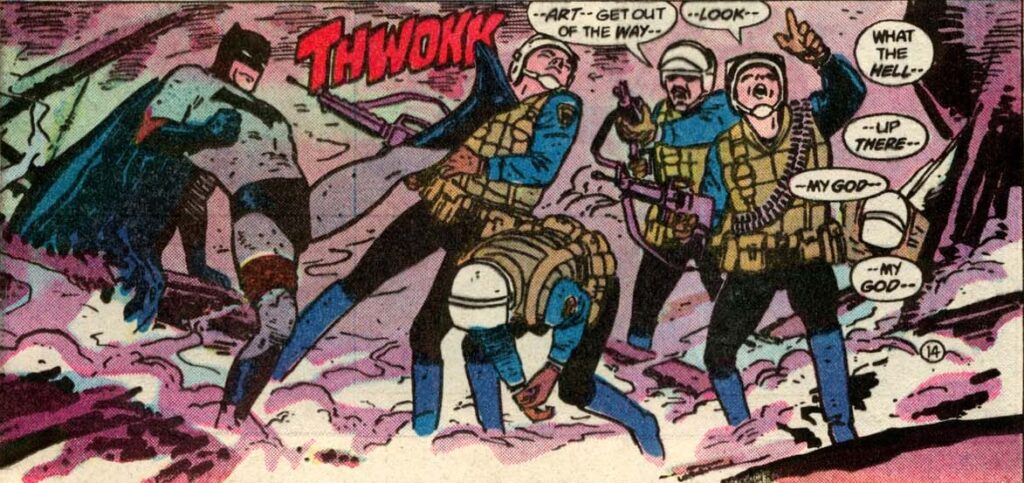
Batman #406
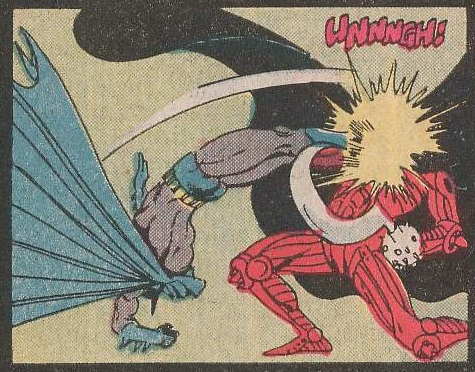
Detective Comics #577
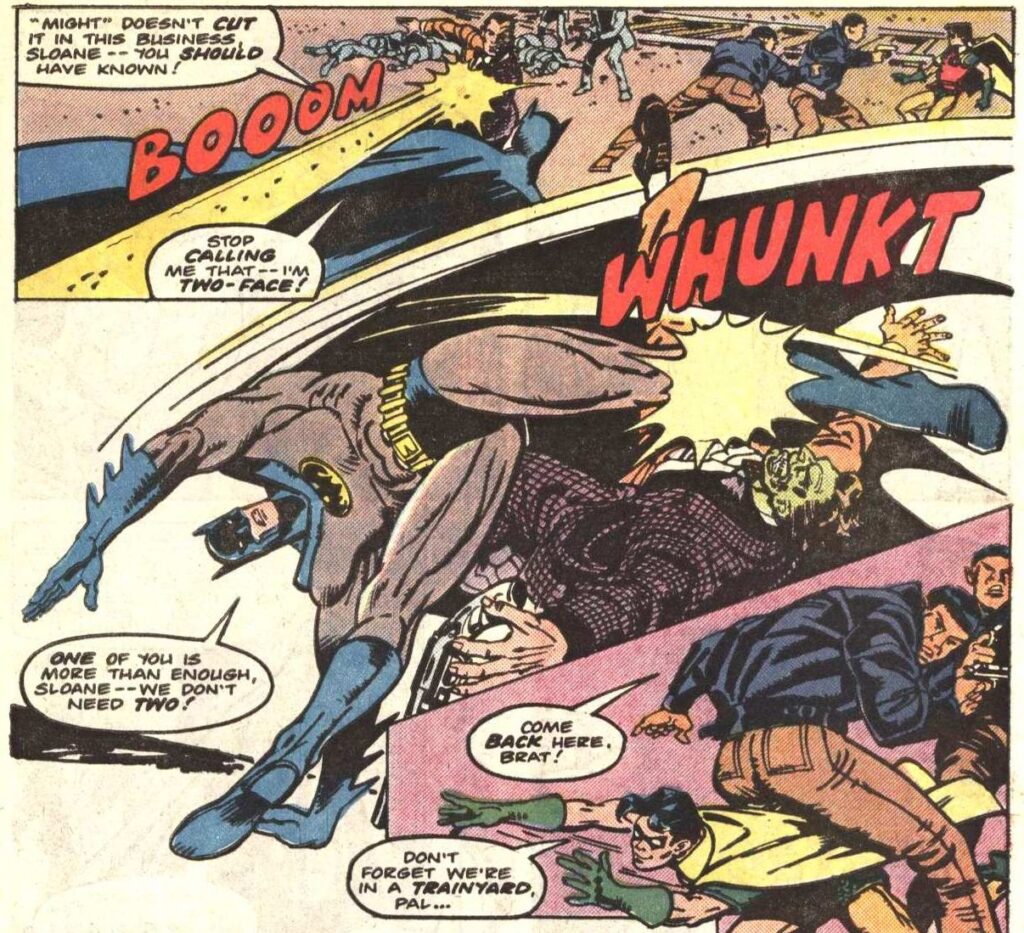
Detective Comics #580
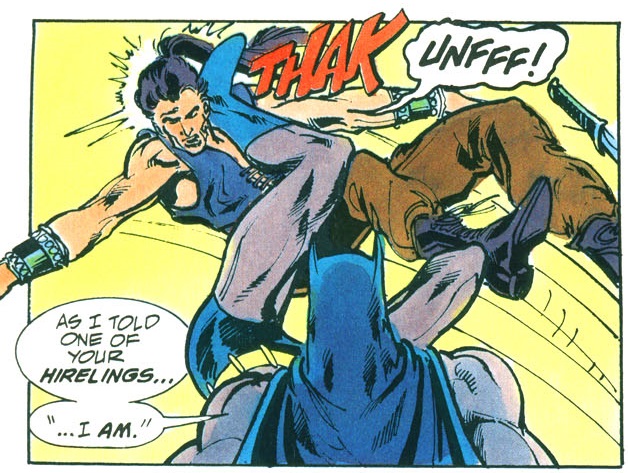
Bride of the Demon
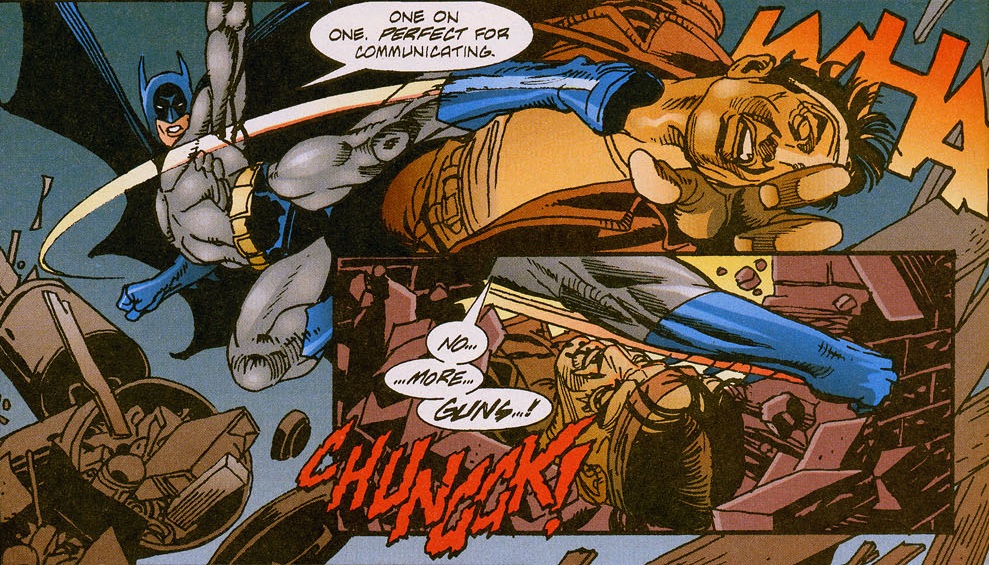
Legends of the Dark Knight #25
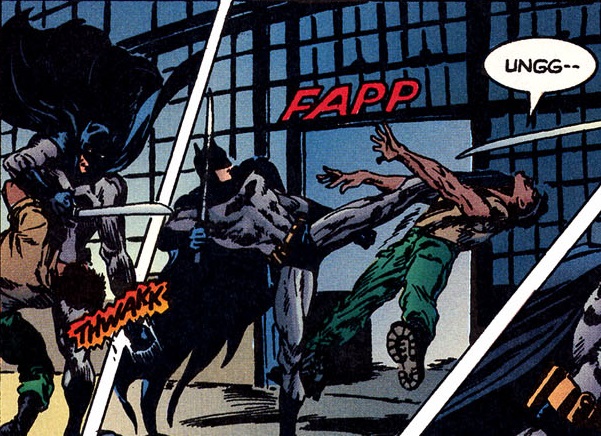
Legends of the Dark Knight #31
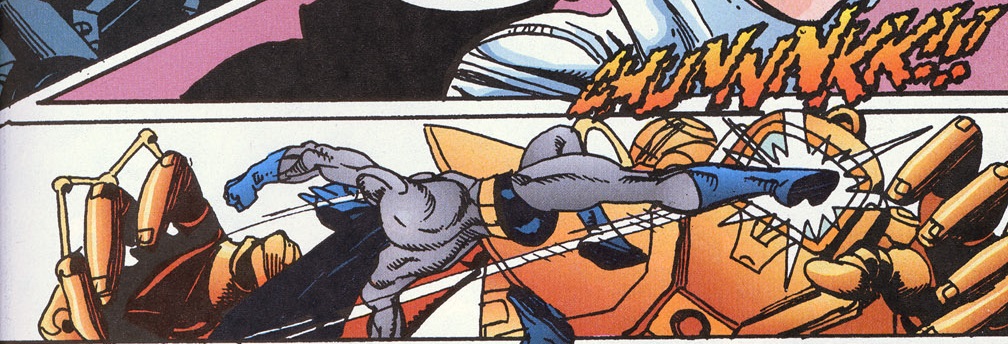
Legends of the Dark Knight #25
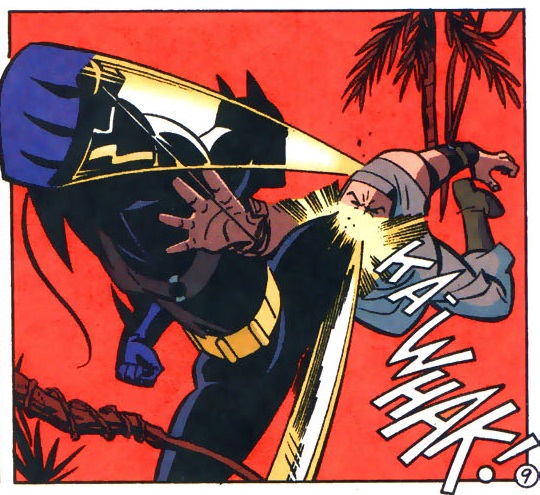
Batman & Robin Adventures #10
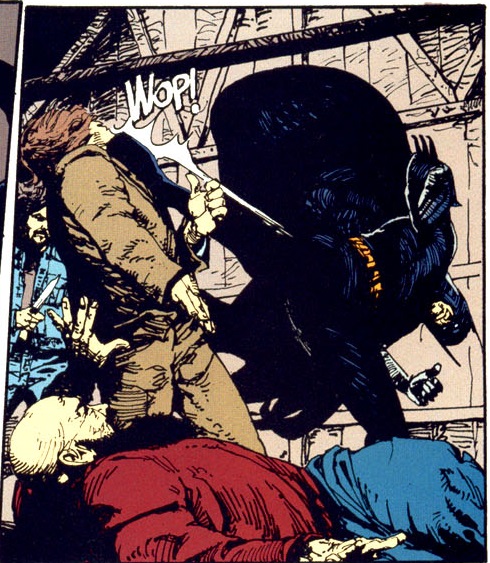
Batman / Phantom Stranger
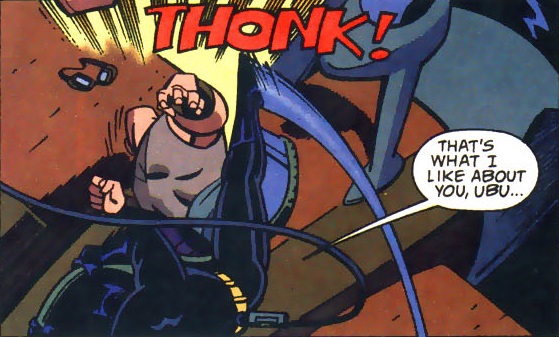
Batman & Robin Adventures #10
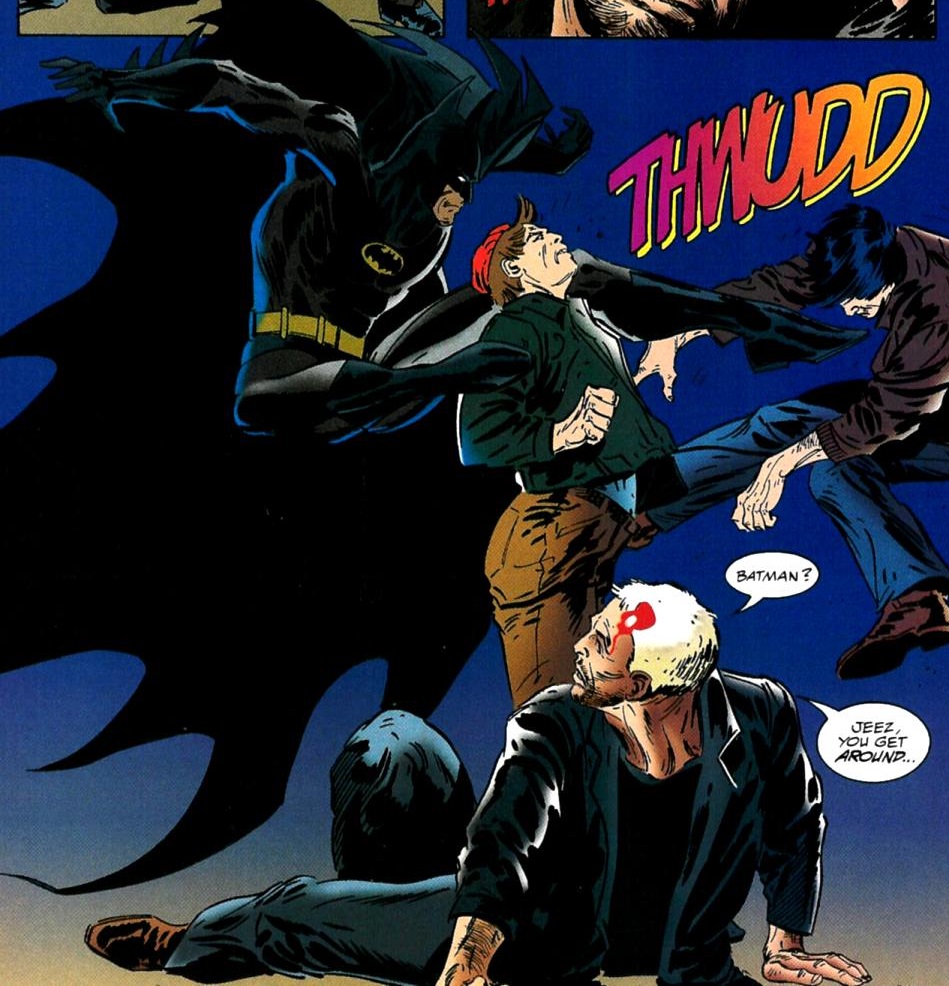
Resurrection Man #7
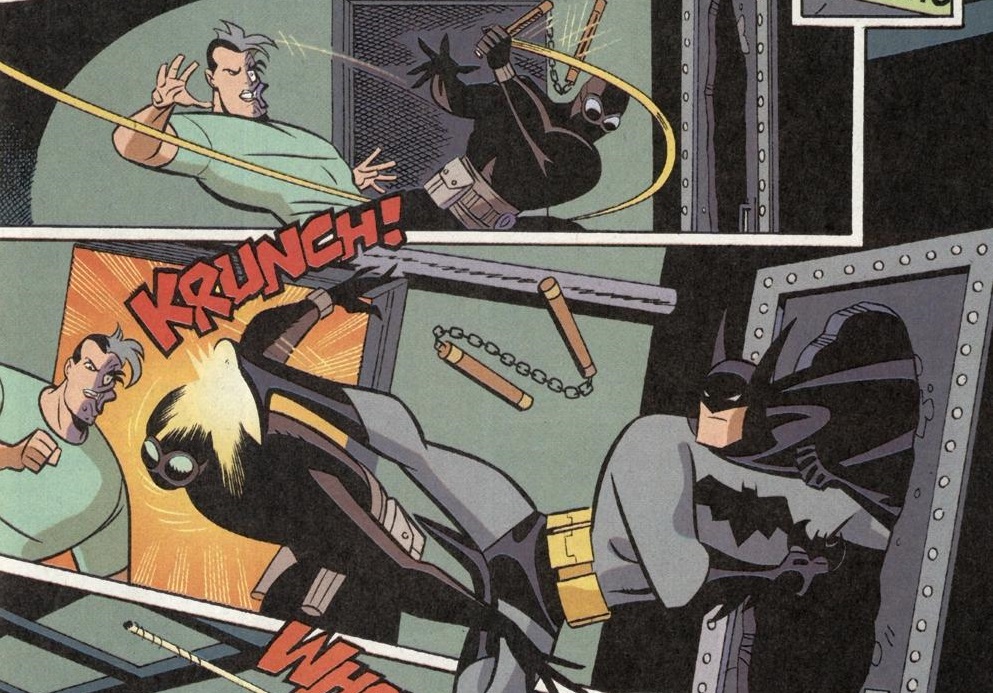
Batman Adventures (v2) #1
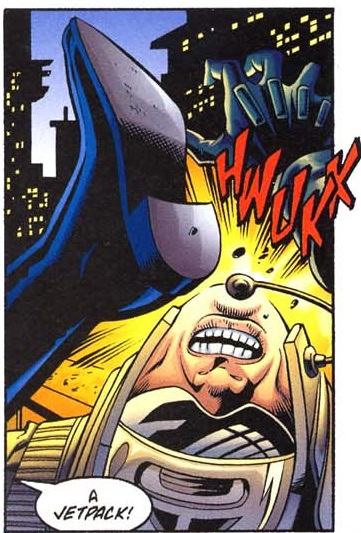
Outlaws #2
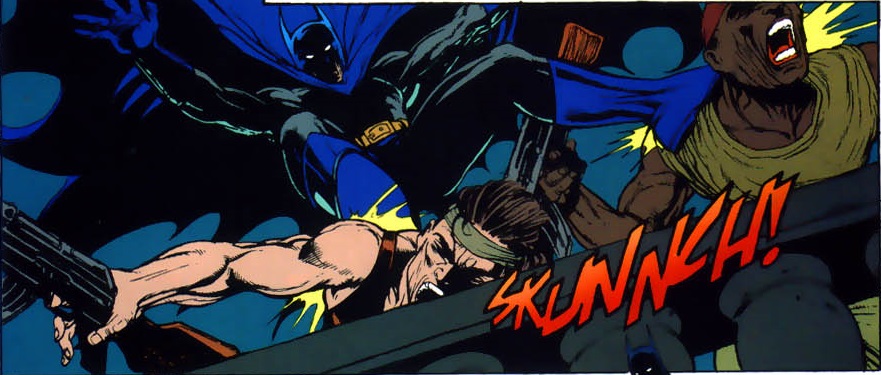
Legends of the Dark Knight #91

Outlaws #3
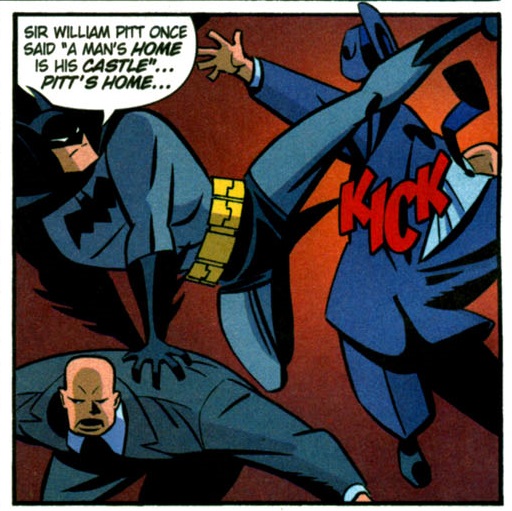
Batman Adventures (v2) #11
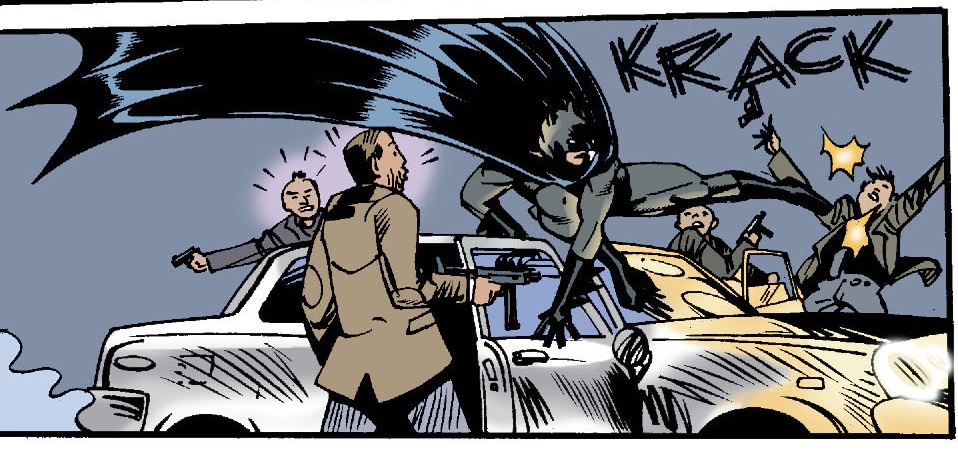
Turning Points #5
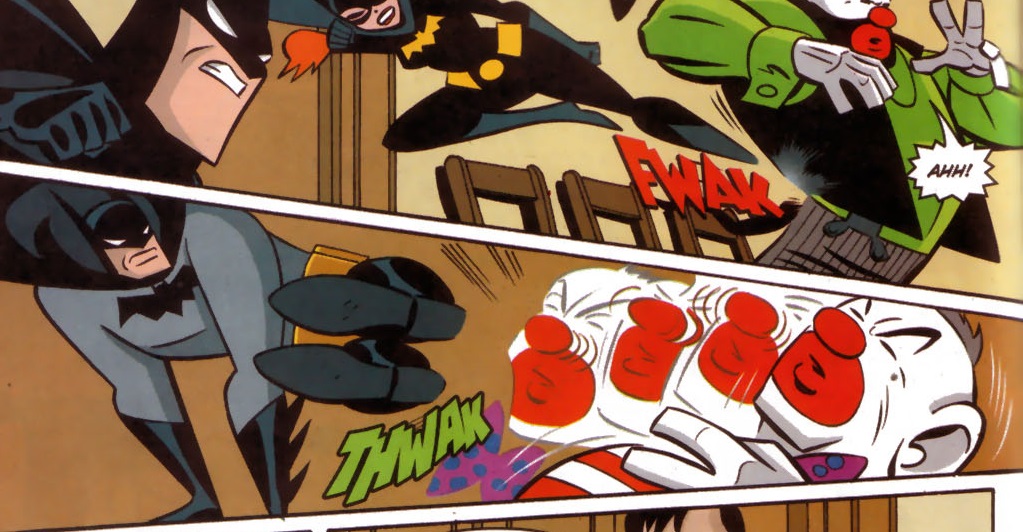
Batman Adventures (v2) #16
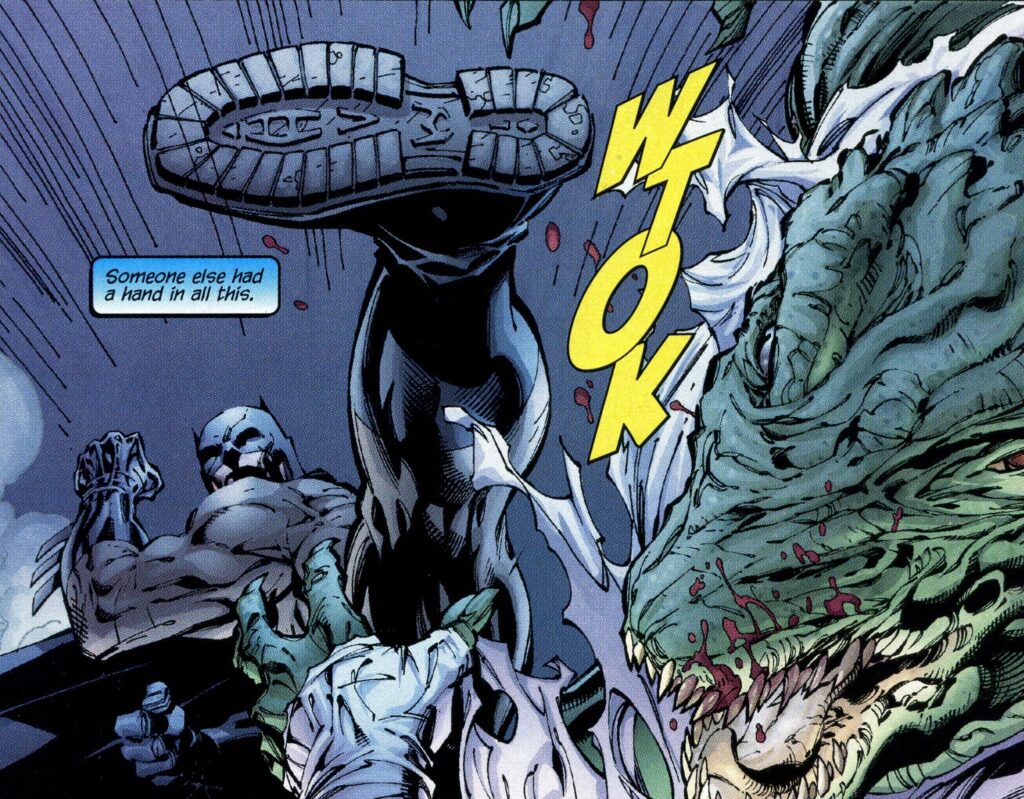
Batman #608

Gotham Knights #31
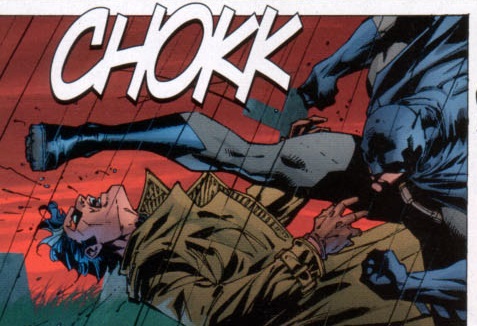
Batman #618
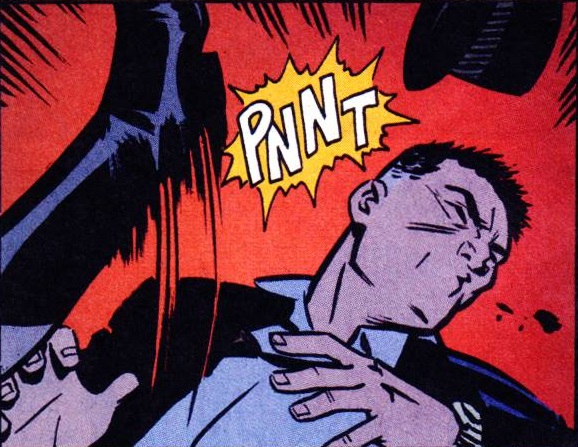
Catwoman (v3) #22
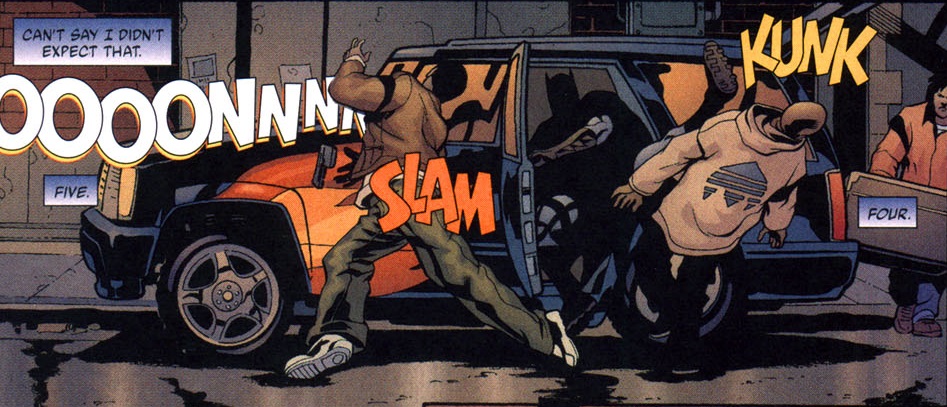
Detective Comics #791
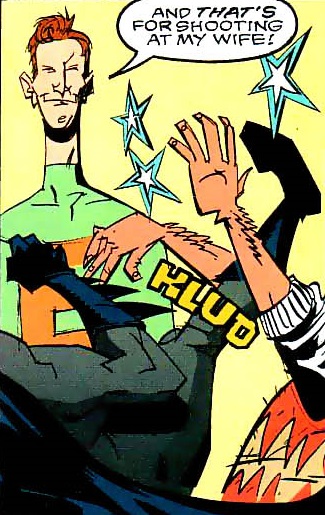
Gotham Knights #41
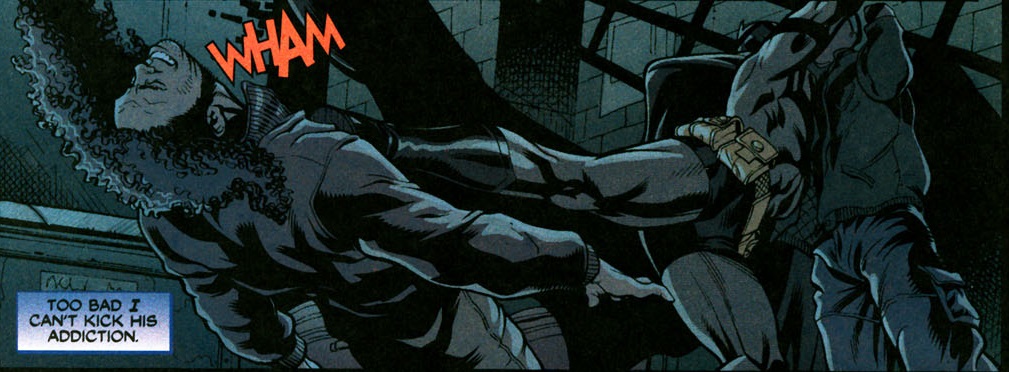
Detective Comics #800
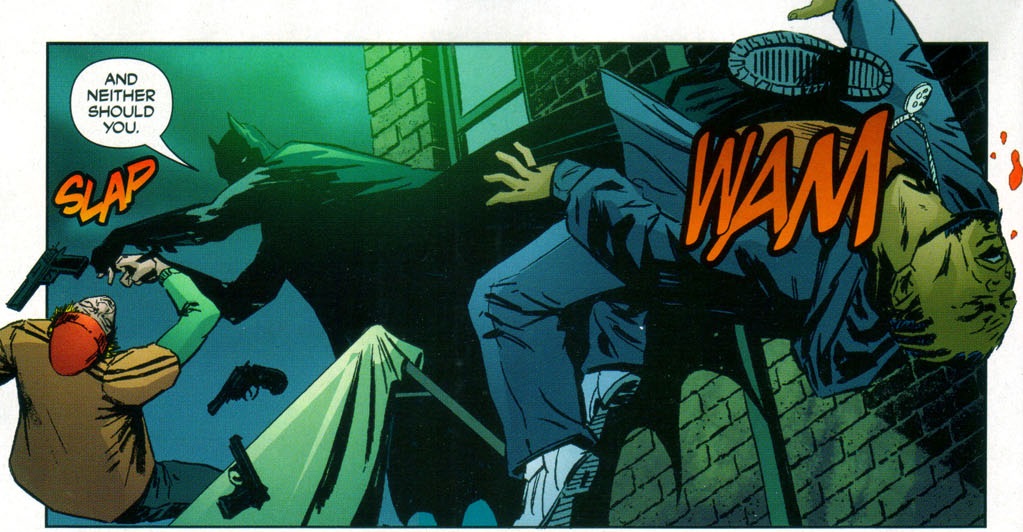
Batman #634

Batman #640
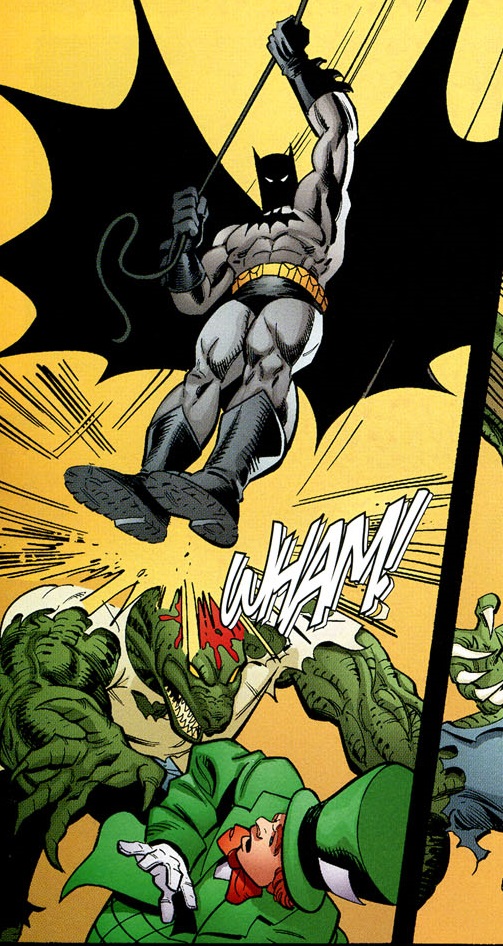
Batman #642
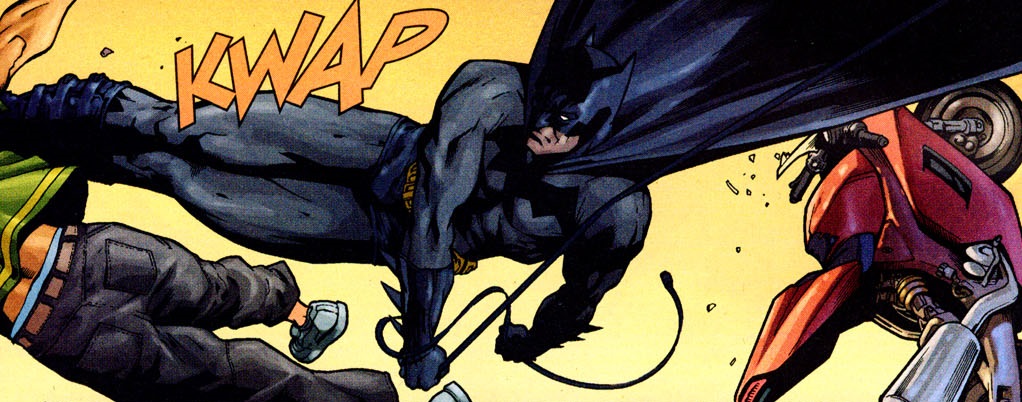
Gotham Knights #60
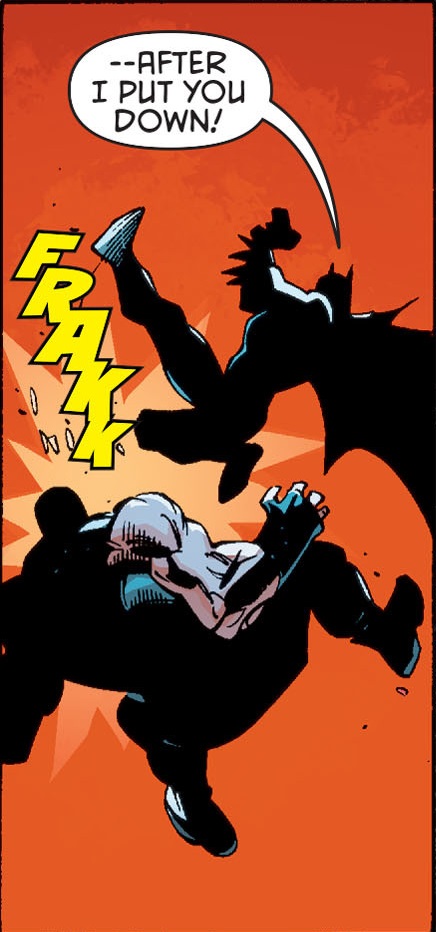
Forever Evil Aftermath: Batman vs Bane
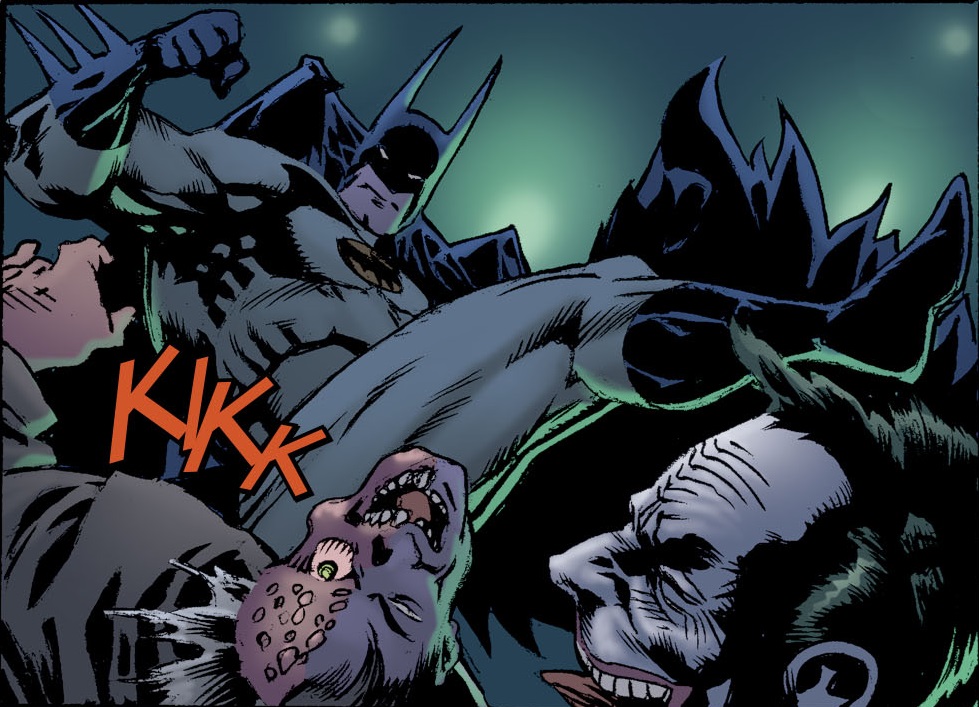
Kings of Fear #1
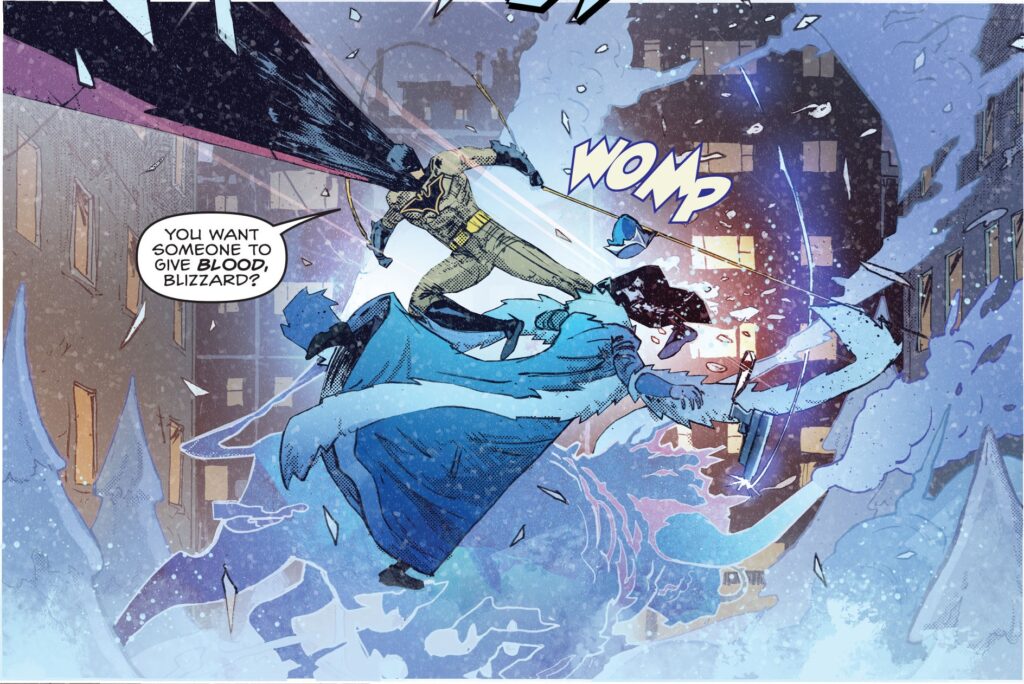
Batman Annual (v3) #1
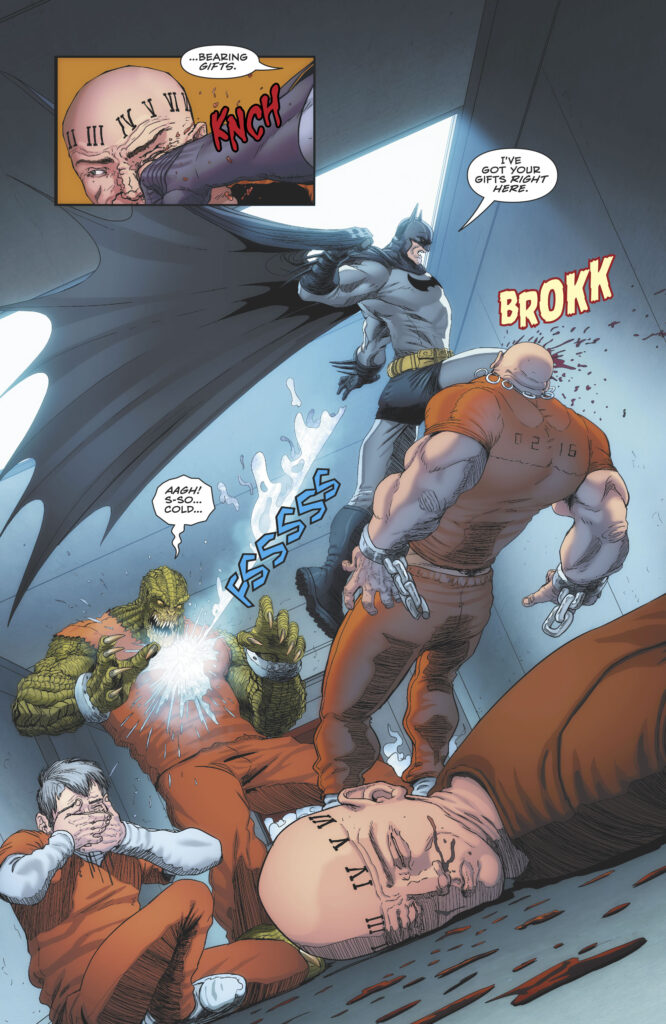
New Year’s Evil #1
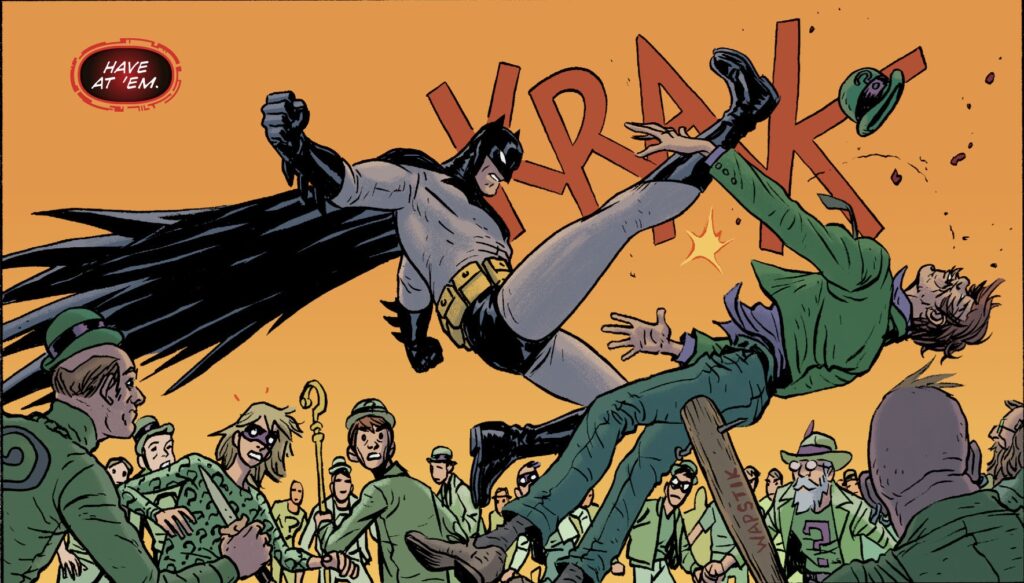
Batman: Universe #1
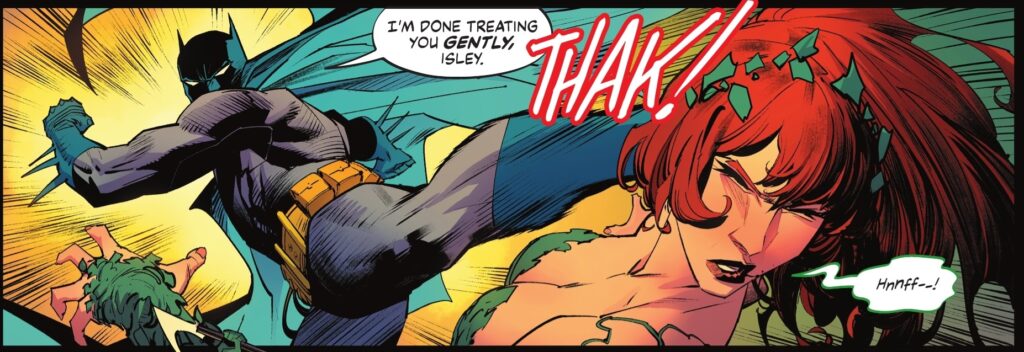
World’s Finest (v4) #1
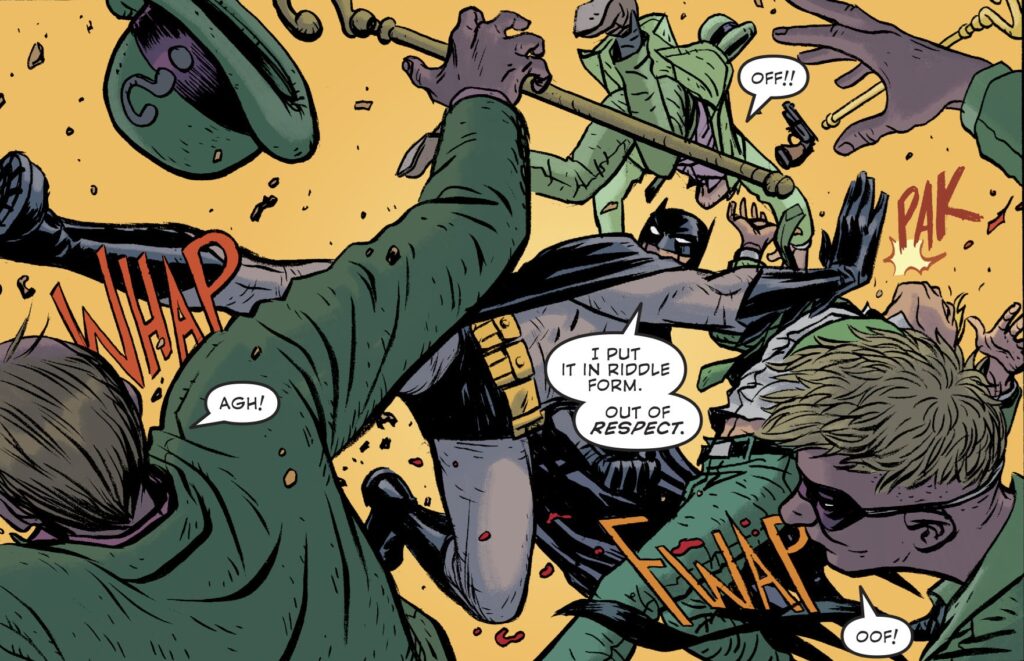
Batman: Universe #1
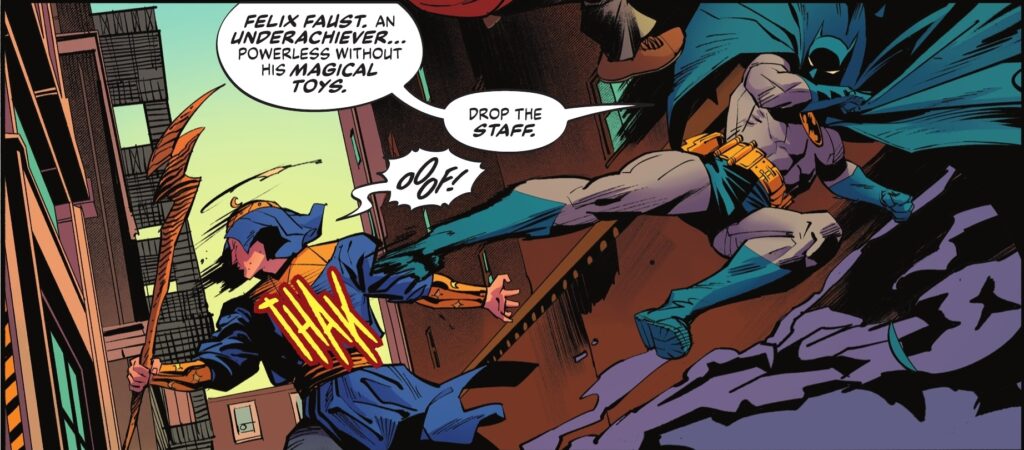
World’s Finest (v4) #2
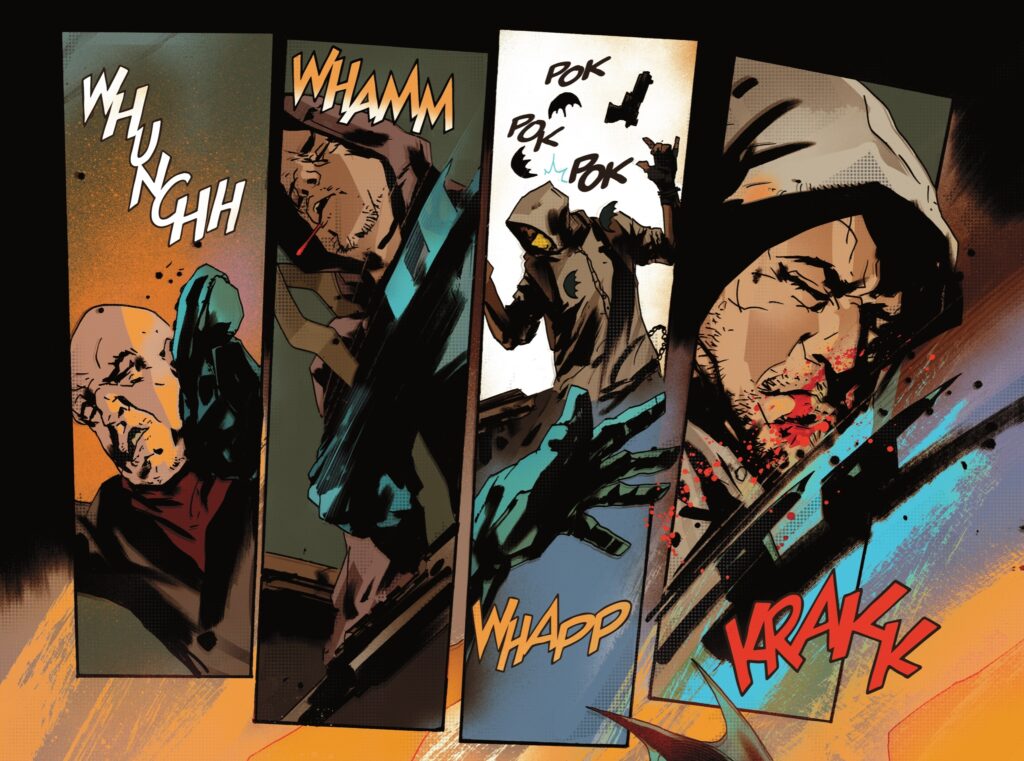
One Dark Knight #1
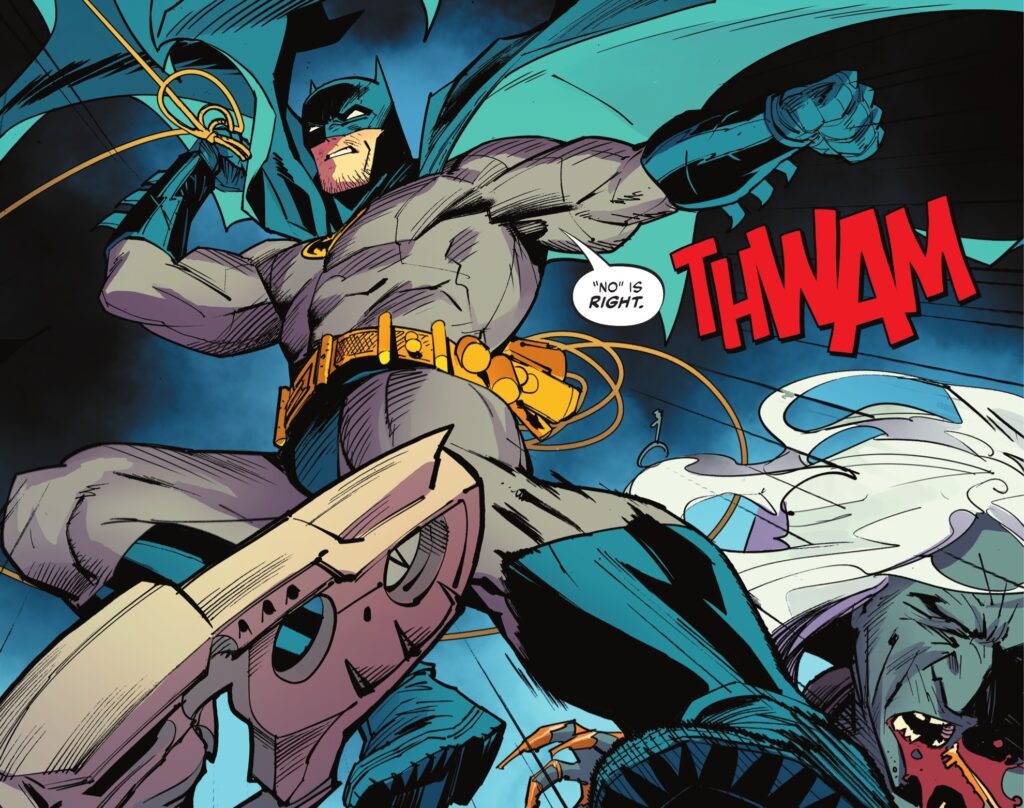
World’s Finest (v4) #11
…and let’s wrap up with something a bit more elaborate:
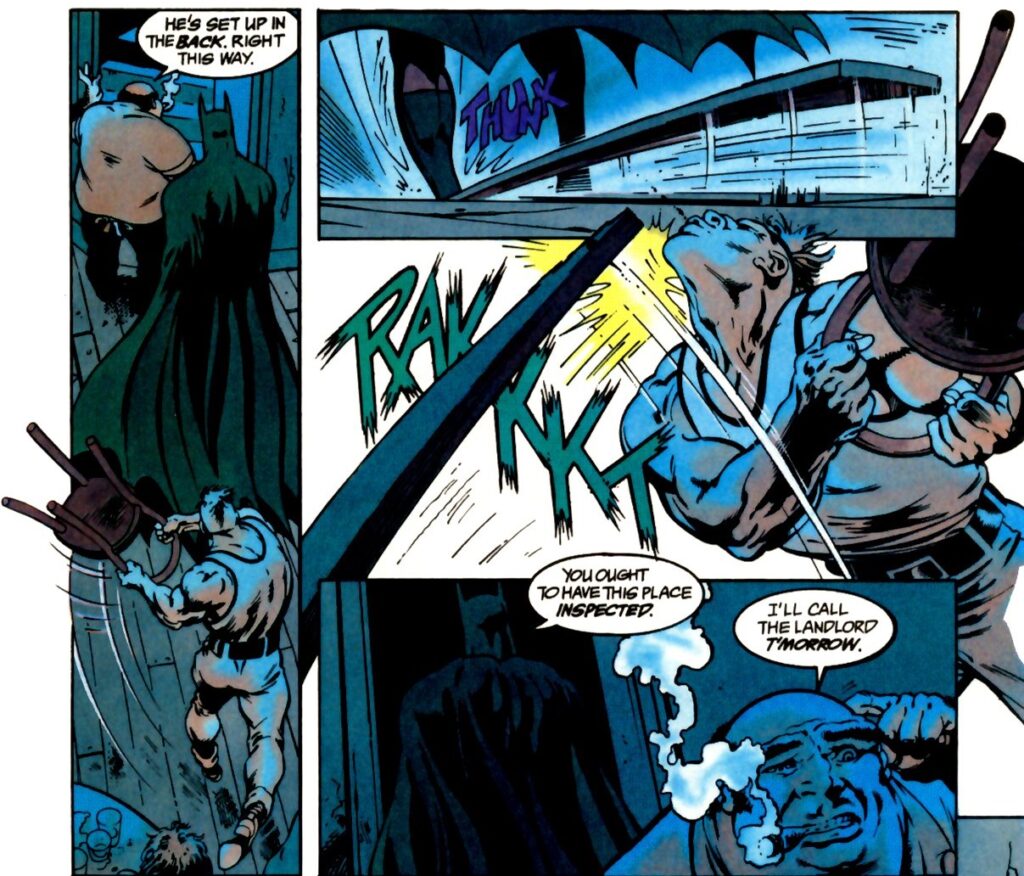
Full Circle
As much as Frank Miller milked Superman’s symbolic potential, I also appreciate how much his comics simultaneously ‘humanized’ the character as well. Miller’s interpretation of the Man of Steel may be eccentric, but his Superman is an actual individual and not just a mouthpiece for themes and ideas.
For all of his fascination with over-the-top figures, at his best Miller tends to display a talent for giving his cast gripping individual voices and a believable interiority. If we go back to The Dark Knight Returns, Superman is never *just* a distant symbol. In fact, in one of his first scenes we get to briefly see the world through his perspective, sharing both his sight and his frustrated inner thoughts…
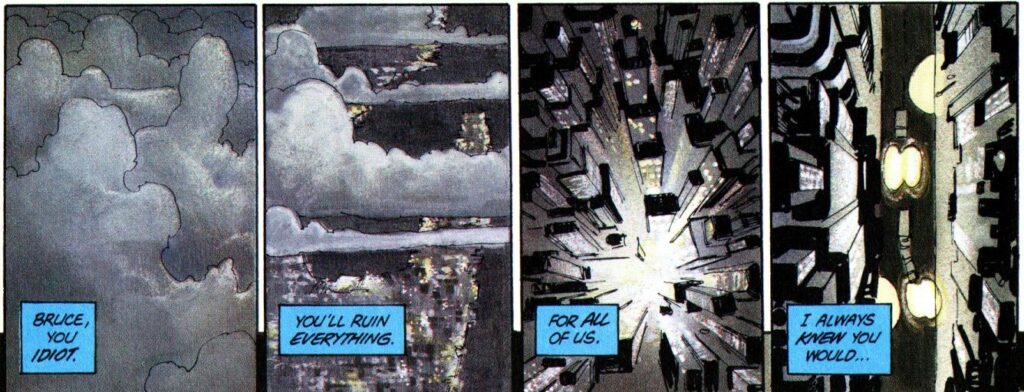
The Dark Knight #3
The book is full of touches like this one. When Superman gets blasted by the nuclear warhead, we feel his pain, confusion, and overall vulnerability (rendered even more striking because of the grotesque way Miller draws him). His future daughter might find it pathetic, but I think there is a beautiful sort of despair in Superman’s thoughts as he begs Mother Earth for understanding towards these ‘tiny and stupid and vicious’ humans who ‘can split the very fabric of reality’ with their nuclear conflict.
While searching for sunlight stored in a flower, Superman seems to be reasoning and negotiating his commitment to his host planet and its inhabitants, conveying the sort of conflicted feelings that make for a more nuanced characterization than DKR is often given credit for.
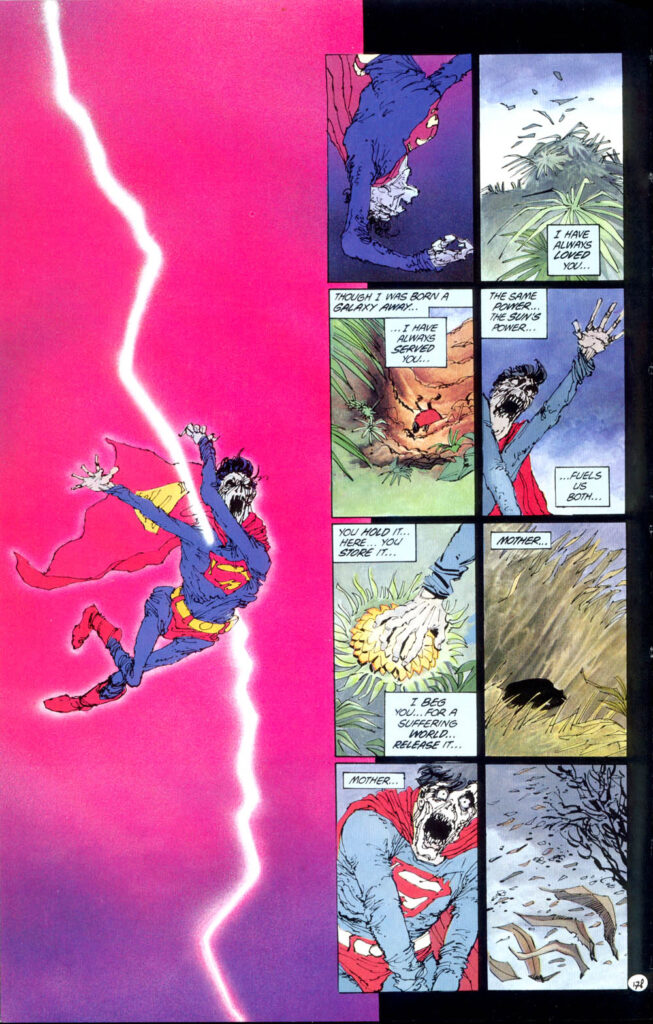
The Dark Knight #4
In fact, even with that final fight against Batman, Superman is never entirely unsympathetic. Hell, Clark even knowingly helps cover up for Bruce’s fake death at the end!
By the early 2000s, though, Frank Miller pushed Superman’s character traits so far that he almost seemed to be parodying his earlier work. If this was true of The Dark Knight Strikes Again, it was even more so in the case of All-Star Batman & Robin the Boy Wonder. In that infamous series, everyone came off like a caricature – if not visually (Jim Lee’s pencils were much more conventional than Miller’s), at least in the way they were written. So, it’s no surprise that the Man of Steel was reduced to a poster boy for blind obedience to authorities, as made explicit by (a similarly caricatural) Wonder Woman:
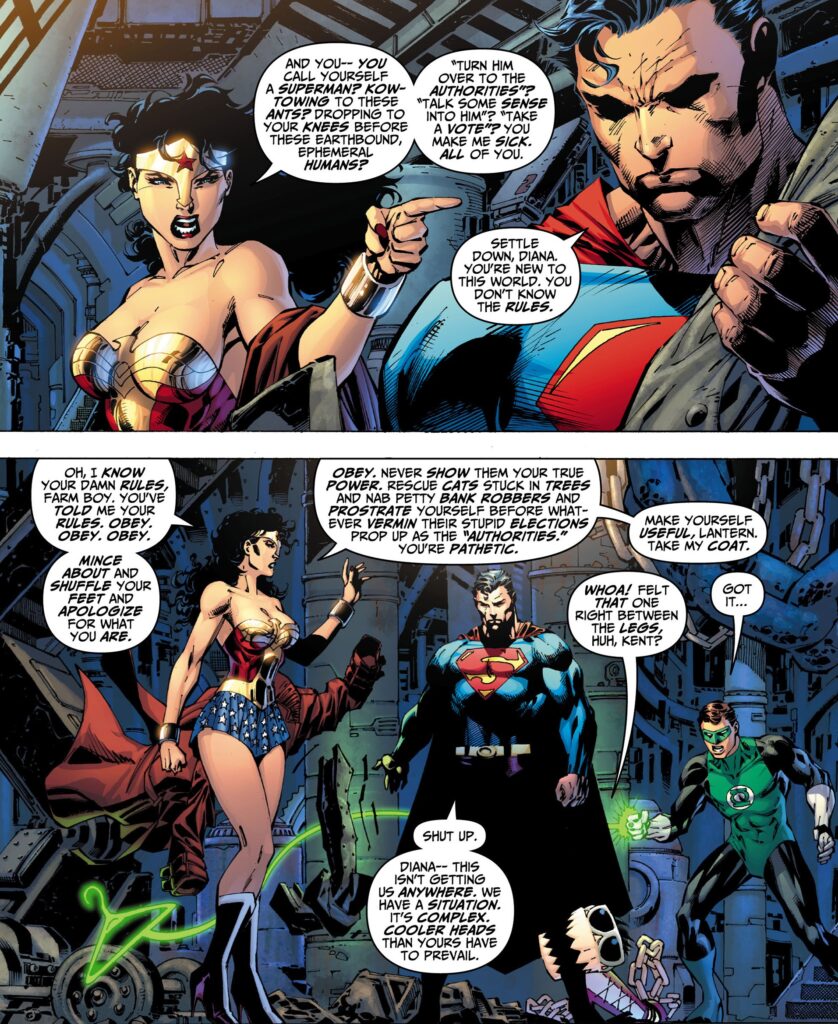
All-Star Batman & Robin the Boy Wonder #5
(Check out Plastic Man’s own visual mockery of Supes’ chained condition…)
As I mentioned in the last post, the critique of Superman for failing to stand up for himself was formulated from a libertarian and objectivist viewpoint, creating a facile contrast to a Batman who wasn’t ashamed to flaunt his superiority.
And yet, even a dreck of a comic like All-star Batman & Robin the Boy Wonder managed to give readers the impression that there was something more hiding underneath the surface. Sure, Superman was defined – negatively – by the fact that he abdicated from using his full might and greatness… but that determined restraint also created a suggestive tension. If, on the one hand, the Man of Steel appeared to reject his own strength, on the other hand the very act of holding back required its own type of (physical and psychological) force:
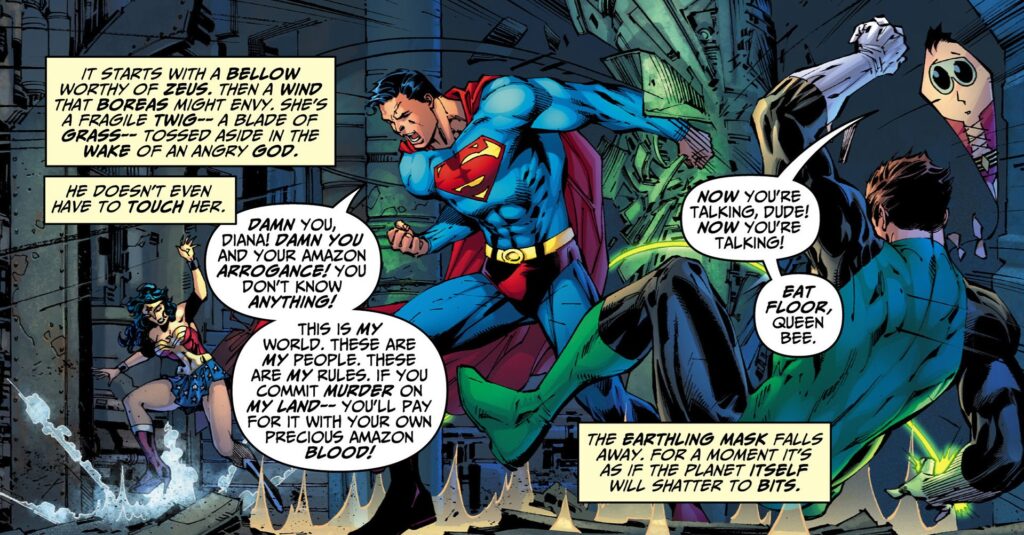
All-Star Batman & Robin the Boy Wonder #5
This notion paid off near the end of The Master Race, when Miller – and Batman – finally acknowledged Superman’s awesomeness. As described by the Dark Knight himself, the Man of Steel now seemed impressive both because of his ability to kick ass and because of the sense that, all this time, he had been hiding from us the true magnitude of his abilities, thus retroactively conveying a gigantic strength of will and self-control.
Drawn by an Andy Kubert trying his best to channel his inner Frank Miller, the result was an archetypical ‘fuck yeah’ moment.
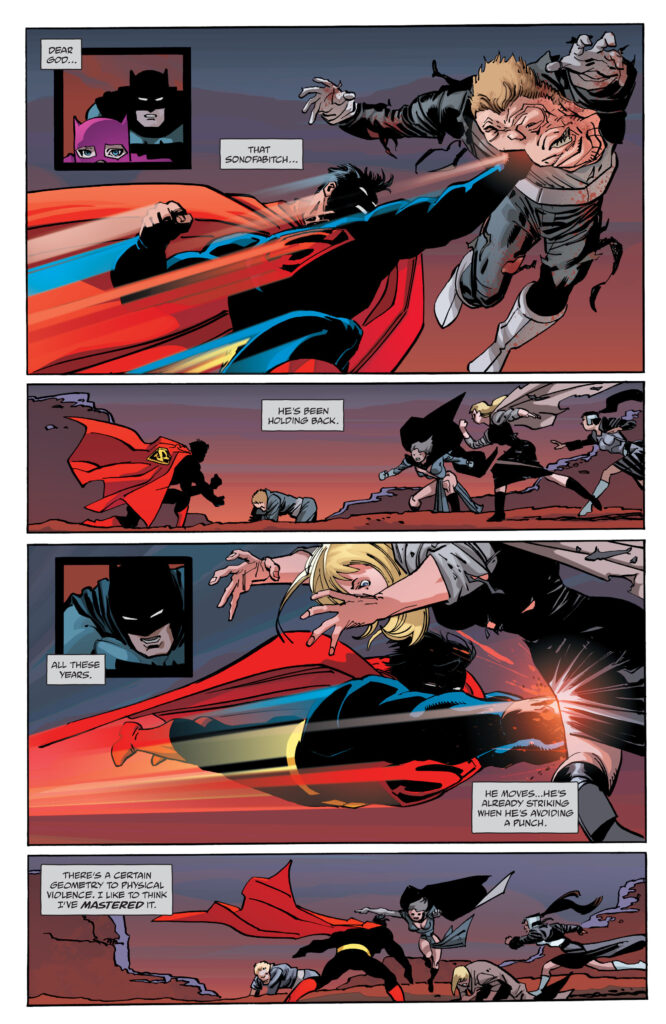
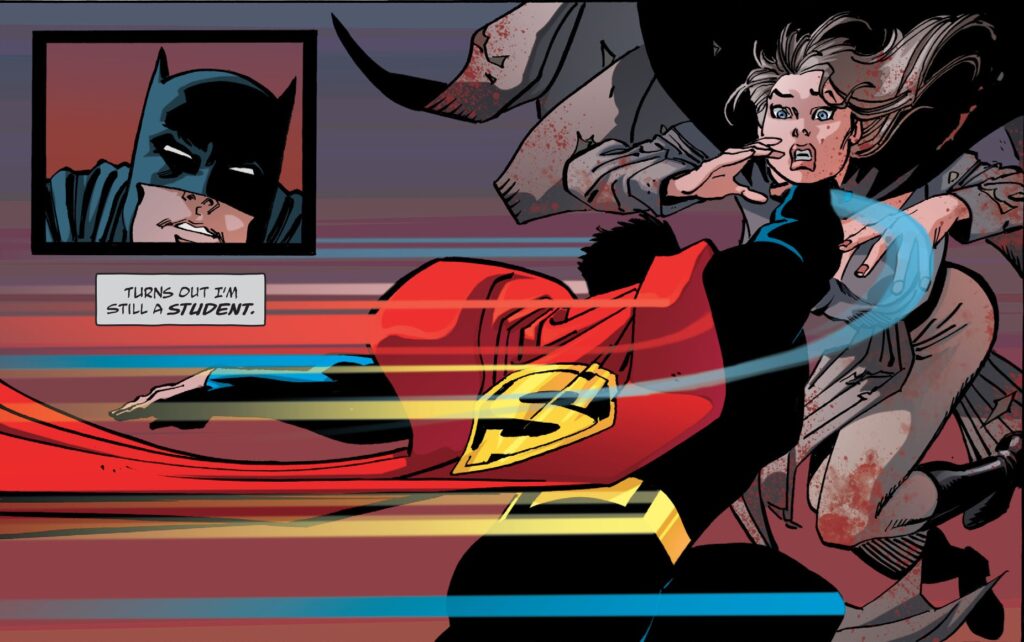
The Master Race #9
Which brings us to Superman: Year One, 2019’s prestige mini-series chronicling Clark Kent’s childhood and youth, leading up to his early days as Superman. This was Frank Miller’s longest exploration of his take on the Man of Steel, properly fleshing out the motifs that he had been gradually developing for decades.
Unfortunately, it’s a pretty clunky affair: a lot of the writing is corny and heavy-handed, and I don’t much care for John Romita Jr’s artwork either. I much, much prefer Miller’s and Romita Jr’s 1993 collaboration Daredevil: The Man Without Fear, which was a more inspired reimagining of a superhero origin. In fact, even some of the high points of Superman: Year One seem like riffs on that earlier comic, such as the scenes about a young boy adjusting himself to his intrusive powers:
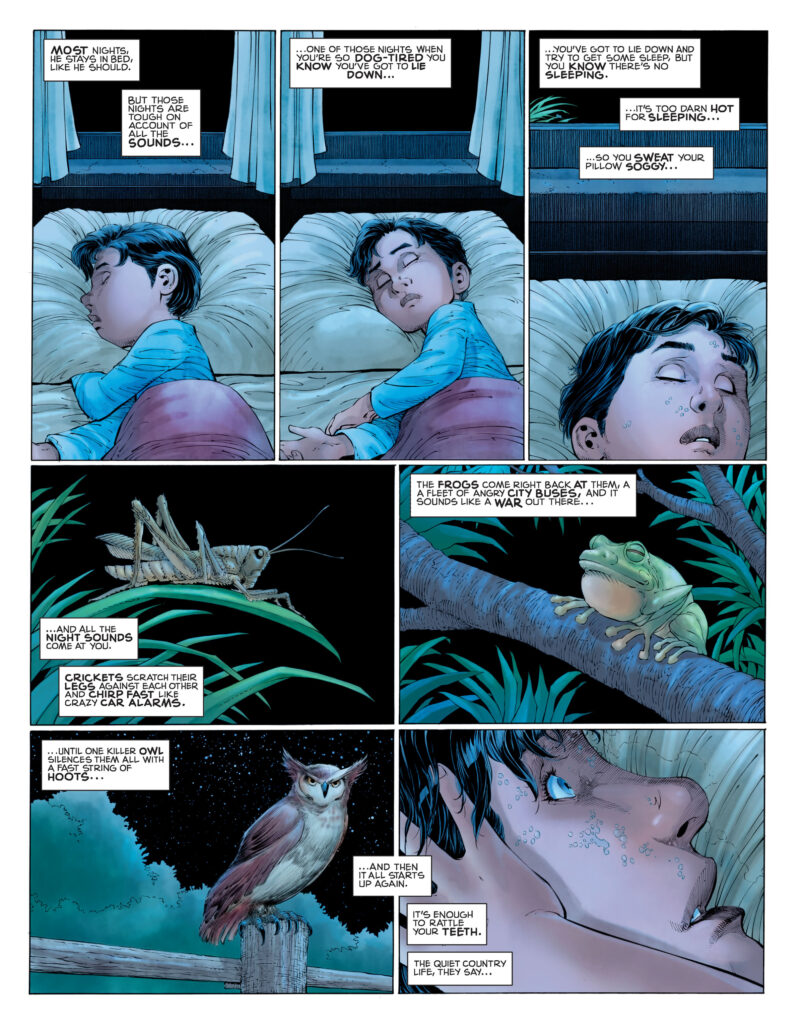
Superman: Year One #1
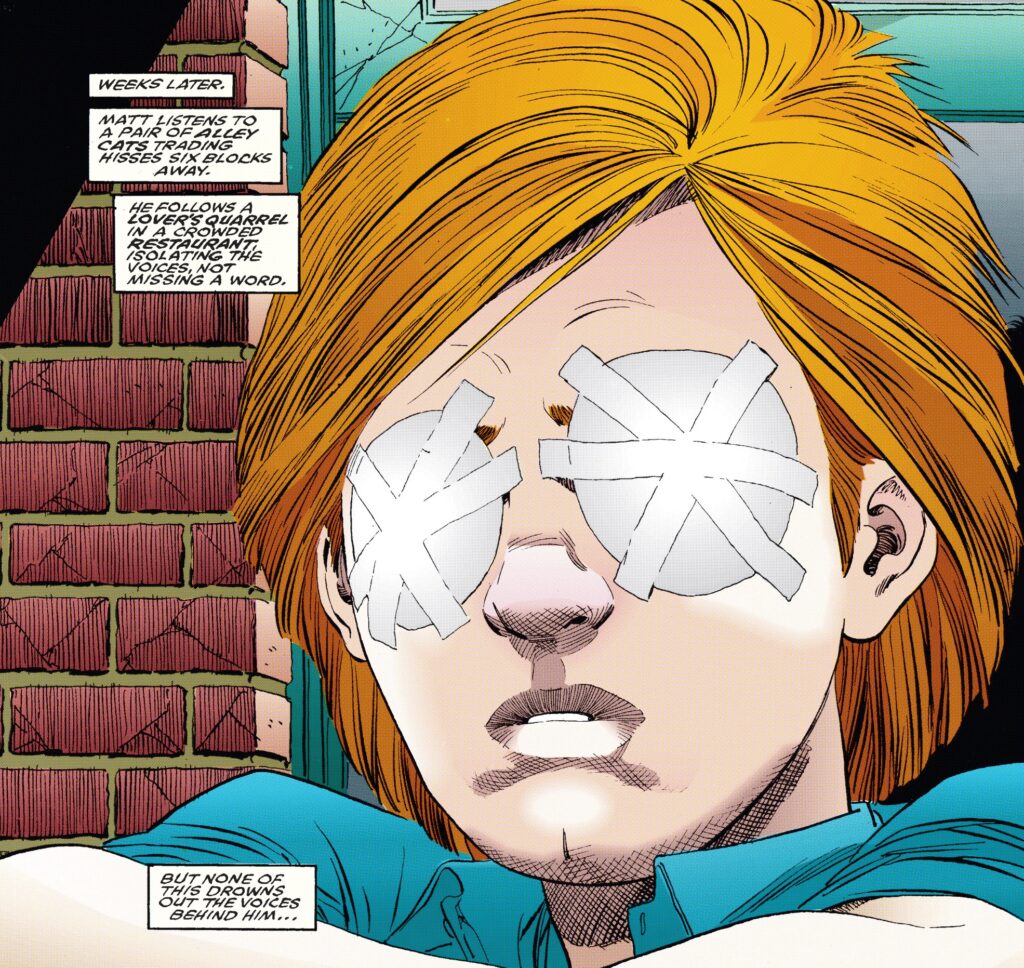
Daredevil: The Man Without Fear #1
Nevertheless, we do get a deeper dramatization of Superman’s relationship with self-restraint. Clark Kent’s impulses to use his superhuman strength are counterbalanced by his mother’s liberal values (‘Nobody’s really bad, darling. Some people just get confused.’) and by his father’s pragmatic pleas for him to stay grounded (‘If you go and start thinking you’re better than everybody else… well, there’s nothing good can come of that’), although the latter also gives him an opening to act exceptionally against injustice when push comes to shove (‘First you talk to them… then you flatten them…’).
It becomes a matter of figuring out the correct strategy and proportion of force. For instance, Clark acts to prevent the gang rape of his high school sweetheart (yep), but he doesn’t kill or maim anyone. Thus, arguably, Frank Miller’s objectivist convictions give way to a more nuanced search for balance, although, in fairness, Ayn Rand’s philosophy also placed a high value on self-control (seen as a triumph of reason over emotionalism).
The first issue of Superman: Year One is ultimately a coming-of-age tale about controlling one’s body and one’s emotions…
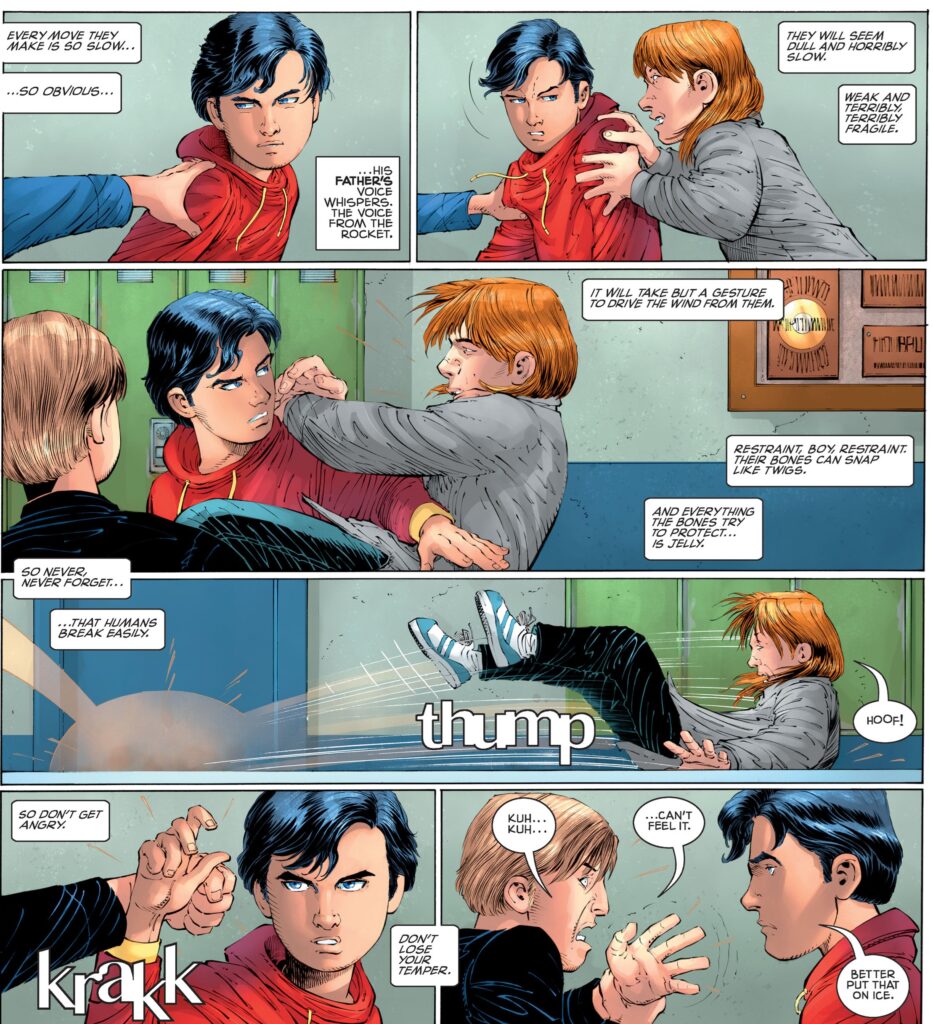
Superman: Year One #1
It’s by issue #2 that things get weird. Even if you disregard the fact that Clark Kent hooks up with a mermaid (like he did in the Silver Age, only more so) and spends dozens of pages fighting the krakens of her incestuous father (Poseidon), you have to cope with a storyline about him joining the US Navy and learning to respect military men, who are ‘fragile’ (compared to him) but nevertheless ‘work so darned hard.’ Frank Miller even shoehorns a SEAL Team Six mission against Muslim-looking pirates (uncomfortable echoes of his Holy Terror!) before having Clark move on to less murderous conceptions of heroism…
Now, for a general Superman story, this is a terrible move. Although he was raised as an all-American farm boy, Clark is so intrinsically defined by his ethics and respect for life that it’s very hard to swallow him enlisting in the US military (except perhaps during World War II), even if driven by a curiosity to see and experience the rest of the world beyond Smallville (it’s much easier to imagine him becoming a reporter in West Africa trying to grasp the complexities of human conflicts, like in Mark Waid’s Birthright).
However, if you accept Superman: Year One as the origin of the Millerverse version of the Man of Steel (the same that shows up in DKR, etc), then I suppose this helps establish Superman’s upcoming relationship with the armed forces, as he continued to identify with their values, accepting orders in the name of the United States’ interests (including acts of war). It’s as if you took Clark out of the military, but not the military out of Clark.
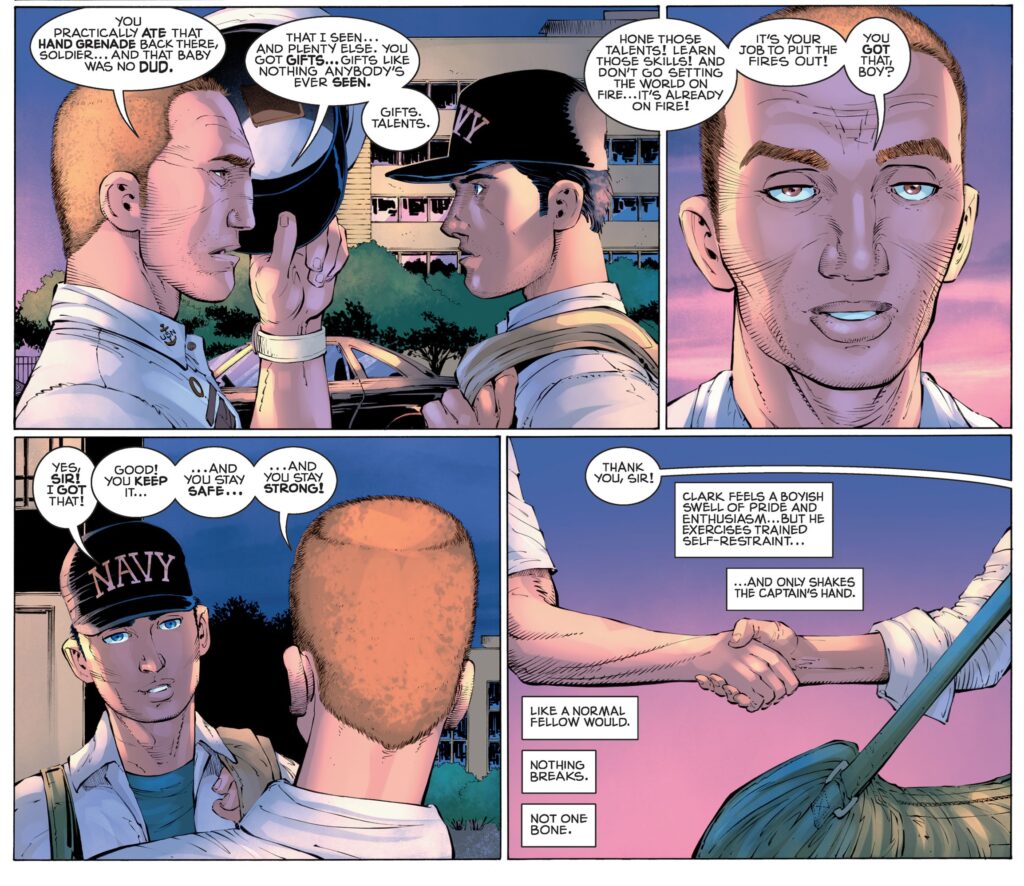
Superman: Year One #2
Not that the continuity fits very smoothly… Among other inconsistencies, the future technology of The Dark Knight Returns looks rather quaint compared to the one on display in Superman: Year One, although comic book fans are used to sliding timelines, so it doesn’t require too much imagination to wrap one’s head around it.
The main connection is in terms of spirit anyway: these works speak to each other. For example, the confrontation between Batman and Superman near the end is clearly intended as a reversal of DKR’s climax, with the Man of Steel now appearing as (supposedly) more dignified and badass and the Dark Knight as somewhat pathetic and ineffective. Either that or Miller was actually taking the piss out of Zack Snyder’s Batman v Superman: Dawn of Justice, treating both characters like jerks while coming up with even more awful dialogue…
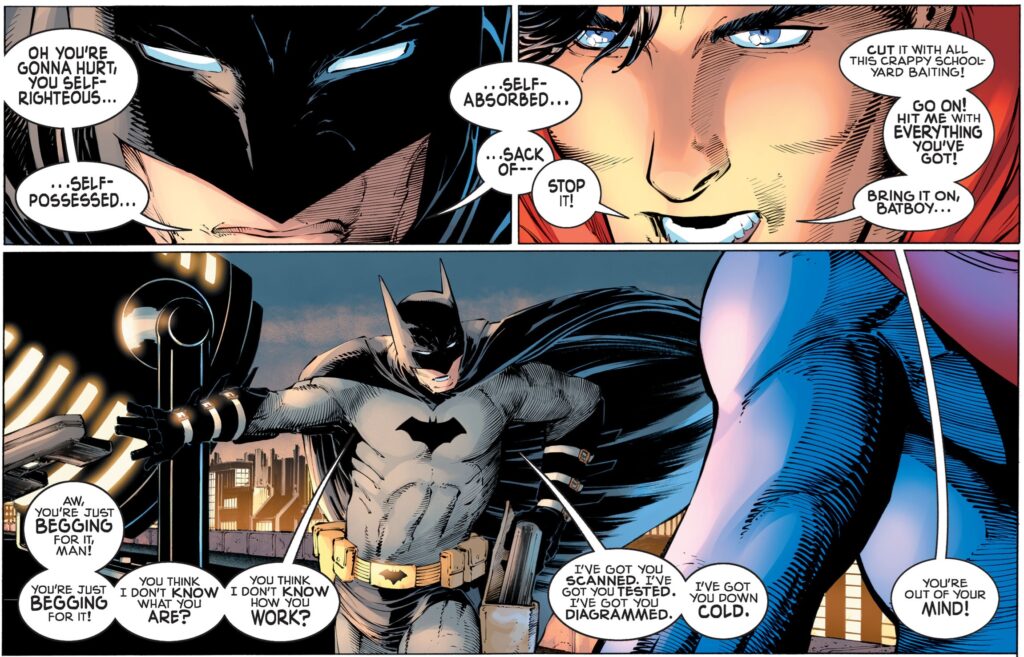
Superman: Year One #3
Batman looks particularly off-putting. I don’t mean the visual, which combines various designs (including the notorious gun holster he sported back in 1939, when Bob Kane and Bill Finger were still figuring out the character). I mean that he sounds stupid and much less cool than in either DKR or Batman: Year One… although it’s not that far from his characterization in All-Star Batman & Robin the Boy Wonder.
I suppose ridiculing the Caped Crusader (if that is indeed what Frank Miller is intentionally doing, which I’m not sure) helps make Superman less of an easy target for Batman’s objectivist voice. In turn, Miller transfers some of that voice to Superman himself, as the latter constantly weights whether to crush or to save humanity.
In other words, at the end of day, Miller turns the Man of Steel into the Dark Knight. Or, better yet, into Rorschach:
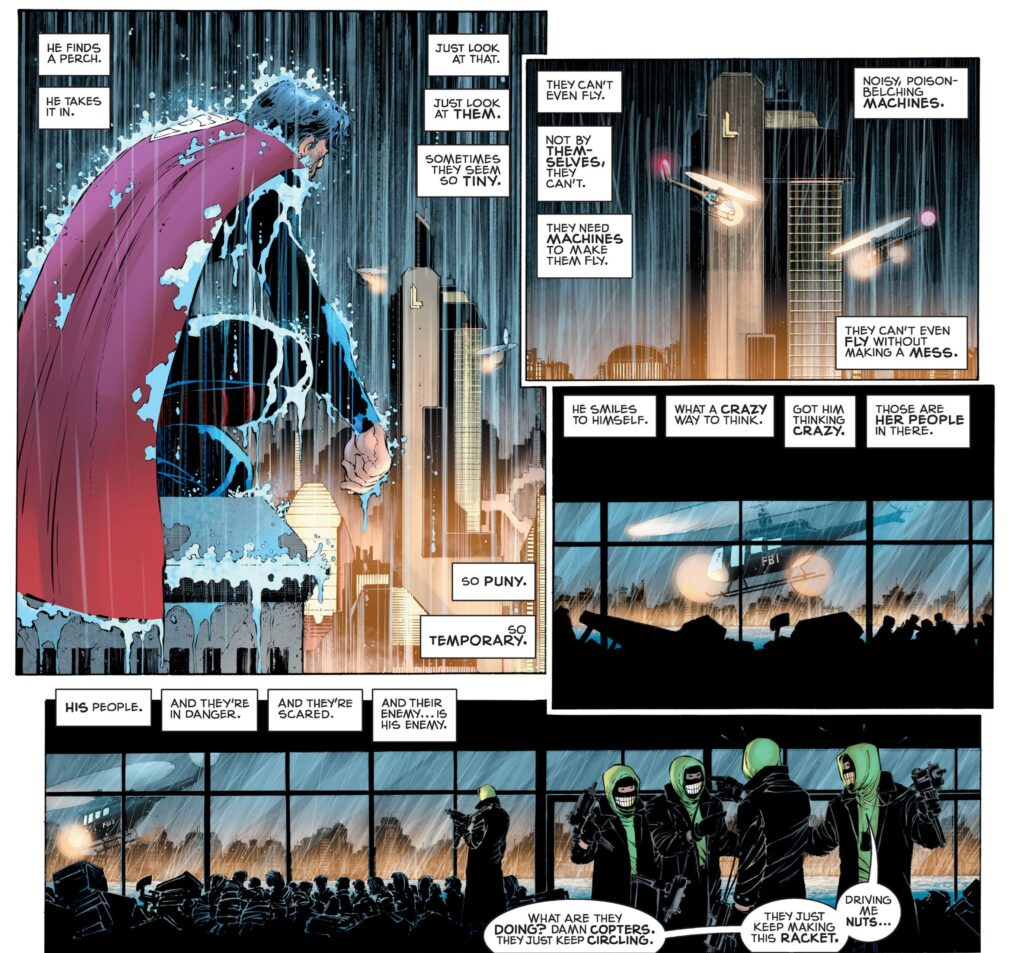
Superman: Year One #3